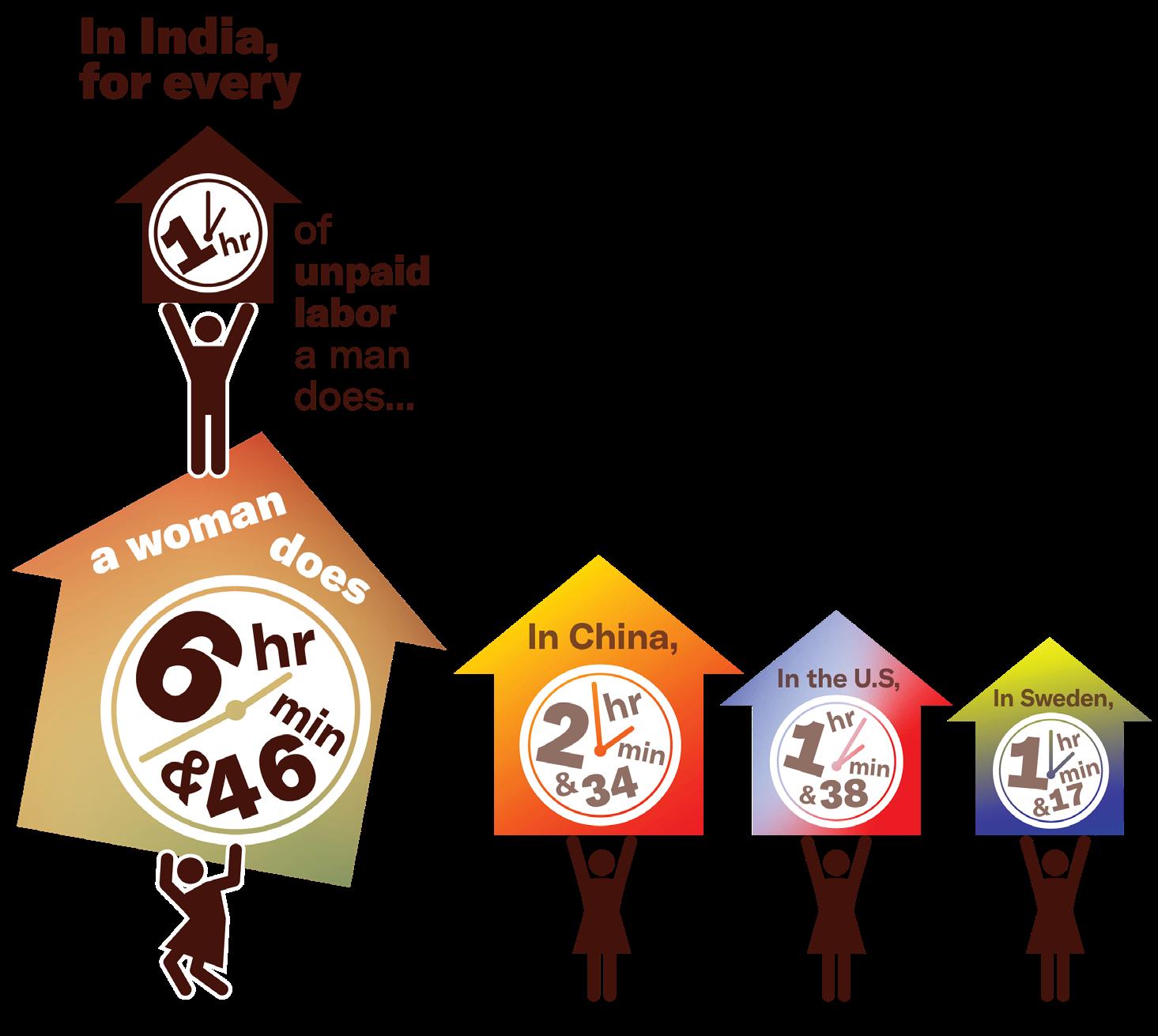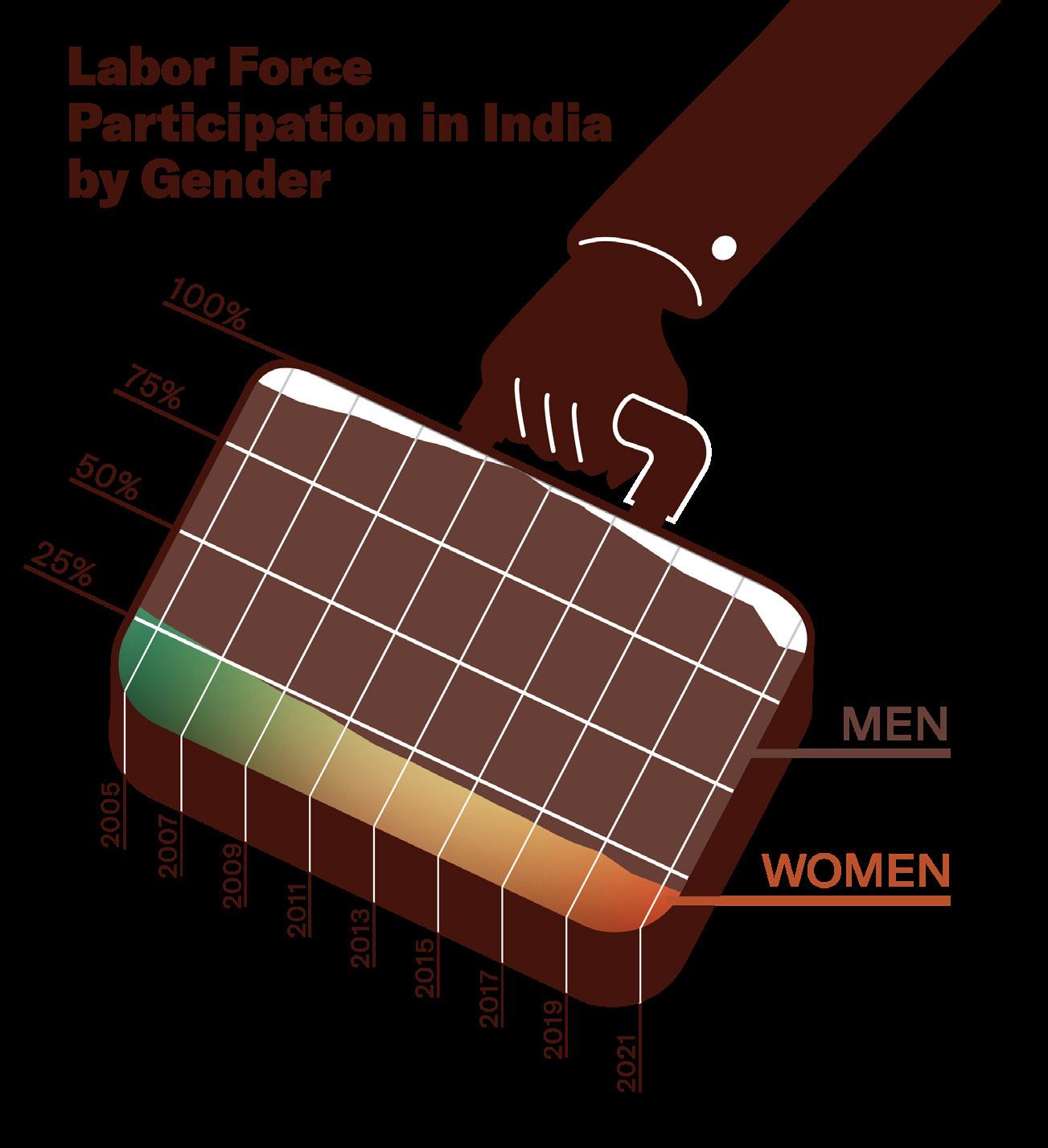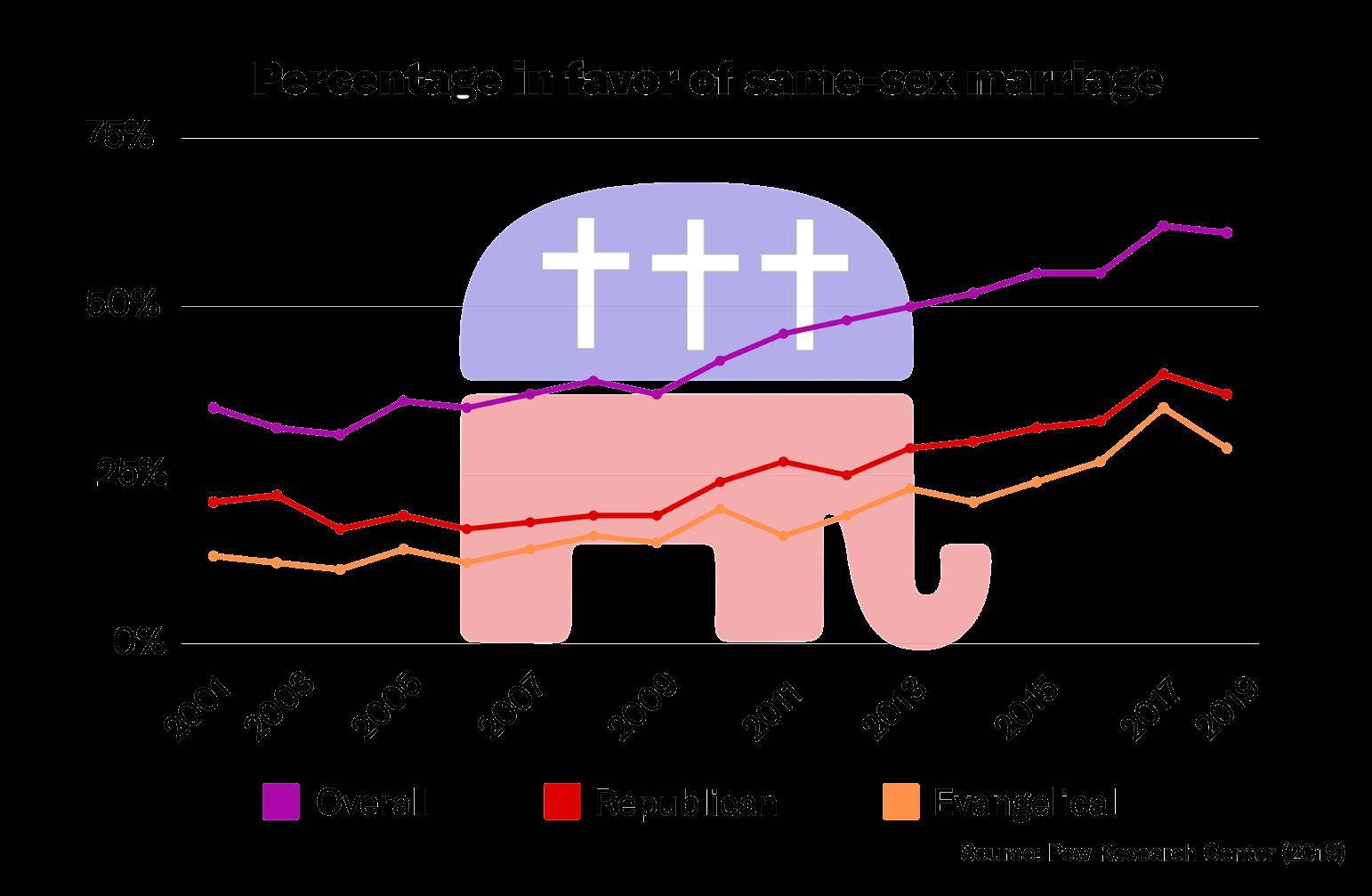SPRING 2023 ISSUE 01

SPECIAL FEATURE SEX


SPRING 2023 ISSUE 01

SPECIAL FEATURE SEX



For your reading pleasure:
Sex—or even talking about sex—is deeply intertwined with political power and change. It is regulated, restricted, and fought over as societies attempt to define what sex is good, what sex is bad, and what sex is. Some governments and nonprofits have spent millions to encourage certain sexual practices, such as the use of contraceptives. Others have leveraged their authority to criminalize sex work or adultery.
In grappling with both the personal significance of sex and its instrumentalization toward political ends, we uncover policy questions rich with meaning and ripe for debate. We are so grateful to learn with our authors as they explore some of them. Julia Kostin’s article, for example, urges us to look beyond sweeping arguments for criminalization or legalization of sex work. Instead, she asks us to consider the impact of specific policies on sex workers’ safety. Repealing laws against loitering and brothel-keeping, Kostin attests, would protect sex workers—even if sex work remains illegal.
Bianca Rosen directs our attention to the Middle East, where fear of legal repercussions and social pressures are hindering efforts to fight the spread of HIV. As transmission rates in the region continue to rise, she argues that some efforts at the local level serve as models for improving access to care.
In “Sex Will Destroy the GOP,” George Weiler moves us from policy to interest group politics.
He explains how the Republican Party has politicized abortion, gender identity, and same-sex marriage to mobilize the religious right and win elections. But he also believes that this strategy is fundamentally unsustainable: As younger and older generations alike adopt increasingly liberal views on sex, Weiler argues that the GOP will be forced to adapt—or pay the electoral price.
While often restricted or regulated by those in power to achieve political ends, sex can also be a tool for the powerless. Anusha Gupta takes us through the history of sex strikes in Colombia, Liberia, and the United States to demonstrate how withholding sex can contribute to tangible political change. She explains that, though this practice is less effective in more individualistic cultures, it can nonetheless be personally liberating. Similarly, sexual empowerment is on Grace Chaikin’s mind as she explores how we approach consent. Chaikin claims that negative consent paradigms are hurting our ability to have open conversations about sexual preferences, intimacy, and boundaries in “A Critique of Consent.”
Sex is often thought of as a private act. And yet, as this special feature illustrates, it is also replete with public meaning. As we put together this issue, we considered sex’s deep ties to power, values, and our shared humanity. As you read it, we hope that you will too.
 — Alex and Mathilda
— Alex and Mathilda
EDITORS IN CHIEF
Alexandra Mork
Mathilda Silbiger
CHIEFS OF STAFF
Cole Powell
William Lake
CHIEF OPERATING OFFICERS
Gidget Rosen
Stella Kleinman
SENIOR MANAGING
MAGAZINE EDITOR
Joseph Safer-Bakal
MANAGING
WEB EDITORS
Alexander Lee
Bianca Rosen
Henry Ding
CHIEF COPY EDITORS
Andrew Berzolla
Robert Daly
INTERVIEWS DIRECTORS
James Hardy
Samuel Trachtenberg
DATA DIRECTORS
Harry Yang
Javier Niño-Sears
BUSINESS DIRECTORS
Gidget Rosen
Stella Kleinman
CREATIVE DIRECTORS
Christine Wang
Daniel Navratil
MULTIMEDIA DIRECTOR
Elijah Dahunsi
LEAD WEB DEVELOPER
Kevin Kim
SENIOR MANAGING
MAGAZINE EDITOR
Joseph Safer-Bakal
MANAGING EDITORS
Bryce Vist
Isabel Greider
Ye Chan Song
ASSOCIATE EDITORS
Antara Singh-Ghai
Asa Turok
Caroline Parente
David Pinto
Grace Chaikin
Harry Flores
Nathan Swidler
MANAGING
WEB EDITORS
Alexander Lee
Bianca Rosen
Henry Ding
SE NIOR EDITORS
Isaac Slevin
Matthew Lichtblau
Natalia Ibarra
EDITORS
Ben Ackerman
Francisca Saldivar
Jillian Lederman
Michael Farrell-Rosen
Mira Rudensky
Suzie Zhang
ACTIVISM SECTION EDITORS
Sofia Barnett
Amanda Page
Gabby Smith
STAFF WRITERS
Amina Fayaz
Ananya Narayanan
Andreas Rivera Young
Anna Brent-Levenstein
Annabel Williams
Annika Reff
Ashton Higgins
Bruna Melo
CHIEF COPY EDITORS
Andrew Berzolla
Robert Daly
MANAGING COPY EDITORS
Isabel Greider
Jon Zhang
COPY EDITORS
Allie Chandler
Antara Singh-Ghai
Audrey Taylor
Ava Cloonan
Dorothea Omerovic
Ellie Brault
Emily Colon
Grace Leclerc
Harshil Garg
Jimena Rascon
Julia O’Neill
Lilly Roth-Shapiro
Logan Wojcik
Miguel Valdovinos
Mira Echambadi
Runpeng (Ivy) Zhuang
Sabina Topol
Taha Siddiqui
STAFF WRITERS CONT.
Christina Miles
Ellen Silverman
Elliot Smith
Elsa Lehrer
Gus LaFave
Hayden Deffarges
Ian Stettner
Ilektra Bampicha-Ninou
Isabella Garo
Jack Jacobsen
Jesse Eick
Jodi Robinson
Juliet Fang
Justin Meszler
Kayla Morrison
Kritika Shrivastava
Maddock Thomas
McConnell Bristol
Michael Ma
Morgan Dethlefsen
Navya Sahay
Neve Diaz-Carr
Oamiya Haque
Rohan Leveille
Rohan Pankaj
Sofie Zeruto
Veronica Dickstein
William Loughridge
Yoo Min Lee
INTERVIEWS DIRECTORS
James Hardy
Samuel Trachtenberg
DEPUTY INTERVIEWS DIRECTORS
Alexandra Vitkin
John Fullerton
Mira Mehta
Yuliya Velhan
INTERVIEWS ASSOCIATES
Alex Fasseas
Alexander Delaney
Alexandra Lehman
Alice Jo
Alyssa Merritt
Anik Willig
Anushka Srivastava
Ava Eisendrath
Benjamin Ringel
Carson Bauer
Charlie Adams
Connor Yew
Eli Gordon
Elijah Dahunsi
Elise Curtin
Ellia Sweeney
Emma Blankstein
Emma Stroupe
Gabriela Venegas-Ramirez
Hayden Deffarges
Hiram Valladares Castro-Lopez
Jared Lebovitz
John Kelley
Lauren Muhs
Léo Corzo-Clark
Matei Vaduva
Matteo Papadopoulos
Maya Rackoff
Miles Munkacy
Mira Echambadi
Omri Bergner-Phillips
Sam Kolitch
Seungje (Felix) Lee
Sophie Jaeger
Taleen Sample
Tucker Wilke
CREATIVE DIRECTORS
Christine Wang
Daniel Navratil
DESIGN DIRECTORS
Hope Wisor
Patrick Farrell
GRAPHIC DESIGNERS
Alina Spatz
Ivy (Airu) Zhang
Kara Park
Lindsay Ju
Muhaddisa Ali
Sun Joo Park
Tina Zhou
ART DIRECTORS
Anahis Luna
Irene Chung
Jacob Gong
Kelly Zhou
Lana Wang
Lucia Li
Maria Hahne
Rosie Dinsmore
DATA DIRECTORS
Harry Yang
Javier Niño-Sears
DATA DESIGN DIRECTOR
Lucia Li
ASSOCIATE DATA DIRECTORS
Arthi Ranganathan
Zoey Katzive
DATA ASSOCIATES
Allie Chandler
Amy Qiao
Andrew Yang
Angelina Rios-Galindo
Asher Labovich
Carson Bauer
Icy Liang
Jo Gasior-Kavishe
Logan Rabe
Manhoor Rafi
Raima Islam
Ryan Doherty
Yifan (Titi) Zhang
Zachary Wang
MULTIMEDIA DIRECTOR
Elijah Dahunsi
MULTIMEDIA ASSOCIATES
Catharine Paik
Daniel Ma
Haotian Luo
Jonathan Zhang
Julia Kostin
Michael Seoane
Soph Thomas
COVER ARTIST
Evelyn Tan
ILLUSTRATORS
Ananya Parekh
Ashley Castaneda
Ashley Nguyen
Ayca E Tuzer
Cara Wang
Elizabeth Long
Evelyn Tan
Grace Li
Haimeng Ge
Jason Aragon
Ji Hu Park
Kennice Pan
Kyla Dang
Nicholas Edwards
Rosalia Mejia
Shreya Patel
Sophia Spagna
Su Yun Song
Temilola Matanmi
Thomas Dimayuga
Tom D'Amore
Vicky Yang
Wenqing (Ash) Ma
Ziwei Chen
BUSINESS DIRECTORS
Gidget Rosen
Stella Kleinman
ASSOCIATE BUSINESS DIRECTORS
Cannon Caspar
Ellyse Givens
Eloise Robertson
BUSINESS ASSOCIATES
Bisola Folarin
Charles Capstick
Charlie Adams
Ely Brayboy
Hannah Severyns
Katarina Chen
Kritika Shrivastava
Manav Musunuru
Mariana Melzer
Martin Pohlen
Morgan Dethlefsen
Nicolas Pereira-Arias
Peter Edelstein
Rohan Leveille
WEB DIRECTOR
Kevin Kim
WEB DEVELOPERS
Akshay Mehta
Andrew Yang
Hannah Jeong


Germany’s doctrine of de-escalation and demilitarization had deep roots. Then, Russia invaded Ukraine. Speaking before the German Bundestag, Chancellor Olaf Scholz announced that Russia’s war in Ukraine placed Europe at a Zeitenwende—a turning point in history. The Bundestag agreed on a major increase in military spending, a reversal of Germany’s decades-long cautious defense policy. Though the vast majority of Germans support Ukraine in the war, many believe that delivering high-tech weapons to Ukraine will only inflame the conflict. Germany should come to terms with the fact that good relations with Russia are not compatible with Scholz’s commitment to “fight the forces of fascism, authoritarianism, and imperialism.”
Scholz’s Social Democratic Party (SPD) has long had a special relationship with Russia. Former West German Chancellor and SPD leader Willy Brandt is associated with the Ostpolitik of the 1960s and 1970s, when Germany reached out to the Soviet-occupied nations of Central and Eastern Europe to normalize diplomatic relations. At the time, the SPD declared the importance of “change through rapprochement.” Increased economic cooperation led to the construction of the first pipeline providing Siberian gas to Germany in the 1970s. By 2021, Germany was sourcing 55 percent of its gas imports from Russia. As allies increasingly criticized Germany’s dependence on Russian energy, former SPD Chancellor Gerhard Schröder, considered a close friend of Vladimir Putin, advocated for the construction of the controversial Nord Stream 2 pipeline. He has consistently declined to denounce the Russian president.
Despite significant pressure, Russia has not given up on its imperialist ambitions, nor has the country transitioned to a more tolerant and
democratic regime. Russia invaded Georgia in 2008, annexed Crimea in 2014, and was responsible for contract killings in Berlin and London. Following the Minsk Agreement, Russia increased its military presence in the Donbas region and Crimea, while Ukraine was denied adequate military assistance by NATO. Just before the war, the construction of the Nord Stream 2 gas pipeline was still underway, even after objections from the United States and European countries, who feared the implications of German dependency on Russian gas.

Germany has long avoided sending lethal weapons to war zones. Scholz’s pattern of caution may be an attempt to appeal to SPD voters, many of whom are uncomfortable with German weapons being used on the offensive in a region where German arms took the lives of millions in World War II. Additionally, the center-left SPD and its largest coalition partner, the Green Party, have strong pacifist wings that they must cater to. In a speech in the late 1980s, Scholz himself stated that, “Peace cannot be achieved by military means.”
Even so, it was Scholz’s coalition partners, the Green Party and the Free Democratic Party (FDP), who advocated for the delivery of Leopard 2 tanks to Ukraine and were exasperated by the chancellor’s unclear position on the question of their procurement. FDP politician Marie-Agnes Strack-Zimmermann described Scholz’s communication as “catastrophic,” while Foreign Minister Annalena Baerbock affirmed in an interview that Germany knows “how important [Leopard 2 tanks] are to Ukraine.”
Scholz made grand declarations that Germany would upgrade its military and support
by Elsa Lehrer ’25, an International and Public Affairs and Economics concentrator and a Staff Writer for BPR illustrations by Kennice Pan ’23, an Illustration major at RISDthe war effort against Russia. Yet, his reluctance to take on a more central role in European security has made Germany look like anything but a strong partner for Ukraine. In April, German President Frank-Walter Steinmeier was scheduled to visit Ukraine with the presidents of Lithuania, Latvia, Estonia, and Poland. However, the Ukrainian government disinvited Steinmeier, citing his closeness to Russia. The perception that Germany is always one step behind its allies in helping Ukraine could isolate Berlin and put Ukraine in jeopardy as Kyiv reckons with the Russian spring offensive.
Scholz’s insistence that the United States deliver M1 Abrams tanks reflects Germany’s reliance on the United States for security in Europe. Of course, Germany should make decisions in consultation with its NATO allies, but while it was still negotiating with the United States, countries like Poland, the United Kingdom, Finland, and Spain had already publicly announced their willingness to send tanks to Ukraine. Against this backdrop, Germany’s export of the Leopard 2 would not be the escalation that Scholz seems to suggest. Moreover, Germany has no reason to fear that the United States will abandon Europe in aiding Ukraine considering that the United States is currently the largest weapons exporter to Ukraine and has an interest in limiting Russia’s international influence.

By constantly backtracking on his statements and excluding certain weapons—most recently, fighter jets—from arms exports, Scholz is not doing himself any favors. His government owes it to the German people and the international community to explain what his plan really is. When then-Federal Minister of Defense Christine Lambrecht offered to deliver a lackluster 5,000 helmets to the battlefront, most Germans were not expecting to send tanks and ammunition to Ukraine a few short months later. The chancellor’s communication failures over weeks-long back-and-forths have overshadowed the fact that Germany is now the third-largest donor of military aid to Ukraine, alongside Poland.
Of course, the entire world hopes the war will swiftly come to an end. However, we cannot forget that the objective of sending military support to Ukraine is to bring Ukraine into a position in which they can negotiate with Russia on equal footing. A ceasefire at this time would be coupled with the suspension of weapons exports to
Ukraine, giving Russian troops time to get back on their feet and strike back with renewed vigor. German politicians calling for a quick diplomatic end to the war are ignoring the tragic reality of millions of Ukrainians; civilian killings like the Bucha massacre show that a ceasefire would not mean a return to normality. Ukrainians’ refusal to seriously consider loss of territory as a diplomatic solution is an act of solidarity with the people who lost their lives at Putin’s hands, as well as with the millions of people forced to flee their homeland who deserve to return safely.
Germans must abandon the idea of a special relationship with Russia. Ultimately, Putin leads an authoritarian regime with imperialist ambitions that is content to see a fragile and reluctant Germany with a perpetual fear of conflict. Germany’s dependency on the United States for security and on Russia for energy makes it look weak. As Scholz has yet to explicitly state that Russia must lose the war, he should accept, once and for all, that Germany cannot seek good relations with an aggressive Russia in the foreseeable future.
“Of course, the entire world hopes the war will swiftly come to an end. However, we cannot forget that the objective of sending military support to Ukraine is to bring Ukraine into a position in which it can negotiate with Russia on equal footing.”
It is a difficult time to be a fisher. As global sea levels continue to rise, illegal overfishing is leaving noticeable, harmful dents in fish populations, destroying the ecosystems fishers rely on for their livelihoods. Illegal, unregulated, and unreported (IUU) fishing activities typically occur in waters under national jurisdiction in violation of national and international fishing regulations. The fishing fleets responsible, both state-backed and independent, lack proper authorization and fail to accurately report catches. As fleets put struggling fish populations at risk, governments are often left unable to prevent or prosecute these flagrant violations of their sovereignty.
IUU fishing fleets’ effects are felt all over the world, from the Philippines to the Caribbean. These fleets often enter fisheries within nations’ exclusive economic zones, overfish local stocks, and leave the marine habitat irreparably damaged. As local fish populations are depleted, the food security of coastal communities comes under threat, leaving them especially vulnerable as climate change negatively alters fisheries in low latitude regions. Developing nations are losing billions of dollars to IUU fishing, as estimates hold IUU fishing responsible for one-fifth of all fish caught globally. Evidence is also mounting that IUU fishers are using forced labor to carry out their misdeeds. Crews on vessels that engage in IUU fishing are often trapped for years, working
in grueling conditions for wages that are withheld and sometimes never paid.
While transnational criminal organizations use IUU fishing to finance illicit activities and nations like Colombia and Spain host corporations that engage in IUU fishing, Chinese corporations are by far the largest perpetrators of the practice. China is home to 8 of the 10 largest companies that engage in IUU fishing and often deputizes its long-range fishing fleets—which have been identified as being involved in IUU fishing—as part of its People’s Armed Forces Maritime Militia. The Chinese government has denied its connection to these fleets while simultaneously using them to its advantage in disputed maritime areas. Consequently, relying on diplomatic persuasion as a solution is difficult.
If fishing communities—both those directly affected by IUU fishing and those affected by IUU fish sales on the world market—are to be protected, quick and effective action must be taken. One way the United States has sought to address the problem is by limiting the amount of IUU fishing stocks in the economy. The logical next step is to expand the Sustainable Import Monitoring Program, a seafood traceability initiative to include all species of fish, rather than just the 13 that are currently covered. Expanding National Oceanic and Atmospheric Administration enforcement efforts may further prevent the sale
of IUU fish stocks on the US market. But these moves will not solve the IUU fishing problem. While the United States is the largest importer of fish in the world, it is only the second largest consumer of fish, behind China. Thus, although IUU fishing will be affected by implementation of these policies, it will be far from eradicated.
While these steps can and should be taken, they will merely absolve the United States of its complicity in the IUU fish trade. To stop global IUU fishing at the source, there must be intimidation of the IUU fishing fleets at the scene of the crime, and prosecution. Additional funding and support should be provided for this mission. The US Coast Guard has shown an interest in combating IUU fishing along coastlines around the world, particularly in the Pacific Ocean. In
“The Chinese government has often denied its connection to these fleets while simultaneously using them to its advantage in disputed maritime areas. Consequently, relying on diplomatic persuasion as a solution is difficult.”
the short term, the United States must increase its deployment of US Navy vessels led by Coast Guard law enforcement authorities to intercept IUU fishing fleets. More broadly, the United States should increase its partnerships with affected coastal states by increasing training, cooperation, and enhancement of their coastal protection and naval forces and investing in multinational IUU fishing interdiction operations.
While idealistic, these policies are urgently needed to prevent further harm. And they are not beyond the realm of possibility: The United States already prioritizes countering Chinese attempts to undermine the international order. Thwarting Chinese long-range fishing fleets engaging in IUU fishing is thus in line with existing US interests. Nations must protect their fishers by moving toward a long-term solution to protect coastal communities, maritime laborers, and ocean habitats.


Dr. Megan Ranney is a practicing emergency physician, researcher, and advocate for innovative approaches to health. She currently serves as Deputy Dean of the Brown School of Public Health and founding Director of the Brown-Lifespan Center for Digital Health. In addition, she is the co-founder of the American Foundation for Firearm Injury Reduction in Medicine at the Aspen Institute. Dr. Ranney has been a leading voice in public health, integrating social media into her health campaigns, such as #GetUsPPE and #ThisIsOurLane.
Yuliya Velhan: How do you think the pandemic affected firearm safety in the United States and globally?
Megan Ranney: The pandemic worsened firearm safety in three ways. First, we saw an unprecedented number of folks buying firearms, many of them for the first time, meaning there are more firearms in circulation. Second, most of those buyers did not get safety training or any basic training in how to handle their guns. Many of the lessons that are passed on through the community about how to handle a gun safely, how to store it safely, and how to minimize risk of injury were completely missed. Oftentimes, those messages can be missing in general, but they were completely absent during the pandemic. Third, there have
been increases in the general level of hopelessness and the lack of community. We all serve as safeguards for one another. We watch out for each other. We reach out to our friends when they’re feeling down, and we provide a sense of community and norms around what’s okay to do and not okay to do. It all disappeared when we were separated and had only social media to turn to.
YV: While firearms are a very political issue, firearm safety is also a big public health issue. How do you think we could get individuals to shift their perspective to see this as a public health issue?
MR: The biggest thing that’s been getting people to shift their perspective to seeing firearm injury as a public health issue is consistent messaging. It is human nature to want to go to absolutes or extremes, and that’s not productive. We haven’t passed policies over the last 15 years that have successfully reduced firearm injury rates, improved safe storage rates, or reduced the risk of firearm suicide or homicide. To me, it signals that we need to have a different approach. In order to be convincing, we would have to share the stories that would help people see it as a public health issue. It’s one thing to say, “Oh, it’s a public health problem,” but what does that mean? What is it that we’re actually asking people to do? Do we have proof that it makes a difference? That’s what many of us are trying to accumulate right now, the proof that this approach does reduce injury and death.
YV: How do you think the #ThisIsOurLane movement has changed the way people look at firearm safety?
MR: The #ThisIsOurLane movement was instrumental in finally releasing federal funds to allow the study of the prevention of firearm injury for the first time in 23 years. It also made a difference in terms of raising the awareness of representatives in Congress and the public about the fact that firearms do cause health problems. It’s not just a criminal justice or policy issue. It’s not just about self-defense or gangs. It’s also about the health effects. With every controversial issue, like this one, there’s a lot of pushback when trying to pass new legislation.
YV: How do you think the issue of government funding can be minimized for future gun safety studies?
MR: It requires a tireless commitment to the issue. There need to be individuals who are going to keep showing up day after day, talking about why this is a health problem and not purely a question of criminal justice, as well as about policies that take into account the lived experiences of those affected by firearm injuries. We also need to pay attention to some of the structural determinants that precede firearm suicide and homicide. These don’t occur in a vacuum. It’s a terminal event in a long series of problems. I think some of the most innovative and promising work around firearm injury prevention takes a step back long before someone has their finger on a trigger. It’s about changing the preceding conditions that lead someone to choose to pick up a firearm to hurt themselves or others and making sure that, in that moment of impulsivity, that person is separated from the thing that can cause lethal effects.
YV: Who is at the highest risk for firearm injury? Is it a result of structural disparities?
MR: There are three groups: Older white men are at the highest risk of firearm suicide, young Black and Hispanic men are at a disproportionate risk of firearm homicide, and women are at a disproportionate risk of intimate partner homicide. There are absolutely structural determinants for each of those. Older white men are at highest risk of firearm suicide due to a mistaken sense of masculinity, stigma around mental health treatment, and easy access to a firearm in a moment of desperation. Structural racism, the built environment, the lack of job opportunities, and easy access to illegal guns are all major drivers of firearm homicide. For women, it’s about lacking financial independence, lacking easy ways to get out of an abusive relationship, and then the easy access of firearms to abusers. We find that domestic violence goes up in societies where there’s greater misogyny and less equality between women and men.
YV: From where we are now, what do you think are the best steps to promoting firearm safety on a large scale?
MR: I think there’s a few things. The first and most important is deeply engaging firearm owners and firearm owner organizations themselves. Second is taking a harm reduction approach rather than an absolutist approach. Maybe we’re not going to get to zero firearm deaths, but we can greatly decrease the numbers we are seeing today. Third is addressing structural drivers of firearm injury. I think policy is critically important, but some are not going to happen in the short term, and there are policies that can actually be harmful. If we can take those first three steps, we will make forward progress with or without policy change.
Edited for length and clarity.“It’s one thing to say, ‘Oh, it’s a public health problem,’ but what does that mean? What is it that we’re actually asking people to do?”
surpassed China as the world’s most populous country, its fertility rate is slowly declining below replacement level, providing an opportunity for its society to reckon with its next big challenge: gender inequality.
by Antara Singh-Ghai ’26Debates about fertility rates rage around the world. India is no exception. As a country where family and children are valued above nearly all else, this fact is unsurprising. But focus on family often comes at great cost for India’s women. In a nation where screening for gender during pregnancy was outlawed due to sex-selective abortions and female infanticide, the cultural value of having a son is immense. Sons are favored in childhood, and many women end up in abusive marriages with their lives controlled by both their husbands and their in-laws. These issues have long been pushed to the backburner in favor of supposedly more pressing matters such as excessively high birth rates. But although India recently

Family planning began shakily in India. Under the guidance of the UN Population Fund, India began an ambitious family planning campaign in the 1970s aimed at lowering the birth rate from a jaw-dropping six children per woman—a phenomenon known as “the population bomb,” stemming from Paul Ehrlich’s book of the same name. It did so through a horrific campaign that in just one year resulted in the forced sterilization of over 6.2 million men, many of them low-income. However, family planning efforts since the 1970s have largely focused on women, as they are seen as easier to control.
Over the last 50 years, family planning in India has become more common, largely through women voluntarily using birth control and choosing to have fewer children. Today, the average Indian family has just 2.1 children, meaning the country is at replacement rate for the first time in its history—a fact that was celebrated as a triumph of government control. The trend of decreasing growth in fertility rates is likely to continue as more Indian women go to school, given that improving education rates among women is one of the greatest drivers of more effective family planning.
While the “time bomb” of India’s population growth has been stalled, the gap between men and women in terms of child-care responsibilities and unpaid labor continues to exist, holding the country back from true social and economic progress. Most Indians hold a relatively egalitarian view of women’s ability to govern but still maintain rather conservative views of traditional gender roles when it comes to work.
These views stem from a deeply entrenched patriarchal culture. Indian women are taught to put others before themselves: Acquiescence to one’s father is prioritized in childhood, piety to one’s husband is emphasized in adulthood, and,
India’s fertility rate has declined— what comes next for the world’s largest country?, an Applied Math and History concentrator, Copy Editor, and Associate Editor for BPR infographics by Lucia Li ’26, an Industrial Design major at RISD, Art Director, and Data Design Director for BPR, Ryan Doherty ’26 a Chemistry and History concentrator, and Zachary Wang ’26 an Applied Math-Economics and Computer Science concentrator
finally, veneration of one’s sons is expected in late motherhood. Stereotypes of domineering mothers-in-law are everywhere in Indian media, but is it any wonder that women so tightly control the family around them when they have never been allowed to have an independent sense of self? American women were similarly confined to the domestic sphere, a phenomenon dubbed the “feminine mystique” by Betty Friedan in the 1960s. Utilizing psychology, Friedan argued that rates of marital unhappiness and sexual dissatisfaction among American mothers were at an all-time high due to their inability to work outside the home. Sixty years later, women have overcome that obstacle in the United States but remain unable to do so in India.
Indian women, on average, only make 21 percent of what men do, and only 24 percent of women work in formal jobs. This does not mean that women in India do not work. In fact, it means quite the opposite. Even in Western countries, women in heterosexual relationships do far more domestic labor than their male partners, a gap that widens after childbirth. A culture of misogyny permeates Indian society, and a lack of social support means that it is women who pick up the slack: They perform an average of nearly six hours a day of domestic labor, compared to Indian men, who do less than an hour a day. This means that Indian women do more unpaid care and domestic work than women in any other country except Kazakhstan.

Rape and sexual assault are still also massive problems nationwide, over a decade after the horrific gang rape and murder of a college student in New Delhi received global attention. While the
perpetrators of that specific crime were put to justice in an extremely public fashion, marital rape remains legal, and rape cases are incredibly difficult to report, let alone convict, especially for poor or minority women.
However, attitudes are shifting among the younger generation, particularly women—a good sign of the social change to come. The government can support this societal change by holding advertisement campaigns to promote gender equality nationwide. So, too, can the wildly popular and influential Bollywood film industry, where famous actresses have already begun to speak out against the pay gap between them and their male co-stars. These changes may seem frivolous, but societal change is difficult to control, and public support from some of the country’s most popular figures can be monumental in fighting back against traditional norms.
The government can and should further promote gender equality by enforcing existing laws against gender discrimination in the workplace and legal system. While gender discrimination is officially outlawed, it remains pervasive in practice because lawsuits on the topic are not often won—or even taken seriously. While meaningful enforcement is an uphill battle—particularly considering that Indian politics, police
forces, and judicial systems are overwhelmingly male-dominated—women and men alike must band together to fight for equal representation.
India has defused the population bomb. However, the “problem” with defusing a bomb is that you must think about what comes next. India now has a unique opportunity to reshape its society on a fundamental level. As women turn to the workforce, India needs to ensure not only that it is safe for them to be there but also that they won’t be shamed for it. Doing so is essential to the country’s continued prosperity.
“While the ‘time bomb’ of India’s population growth has been stalled, the gap between men and women in terms of childcare responsibilities and unpaid labor continues to exist, holding the country back from true social and economic progress.”
It would take Russian forces 60 hours to reach all three Baltic capitals. In less than three days, NATO members Latvia, Lithuania, and Estonia are cut off at Kaliningrad, strangled for resupply, and eaten alive. In this war game, the combined forces of NATO are on the back foot, faced with the prospect of an escalatory counteroffensive or a temporary concession. Put another way: They either defend the mission of NATO, potentially with nuclear weapons, or weaken it, sidestepping the nuclear question.
This scenario is one of many imagined by a wide range of experts who set out to explore the most vulnerable parts of the NATO alliance back in 2015. And in any game involving the Baltic states, one common denominator turns the tide: NATO membership for Sweden and Finland. Based on NATO’s collective defense clause, an attack on the Baltics means an attack on all NATO members. Finland shares a 830-mile border with Russia, and the Swedish island of Gotland would be an ideal staging point for a forward posture over Baltic airspace. In a scenario involving the two Nordic countries, the Finnish front draws Russian troops away from a Baltic assault, and Gotland acts as an unsinkable aircraft carrier, strategically positioned to aid in the protection of the Baltic coast. Despite their expressed desire to join the alliance, Finland’s membership was held up for ten months, and Sweden’s is still up in the air. Both were blocked by Türkiye. As the board is currently set, their membership might

appear inconsequential. In the case of an escalation, it might make all the difference.
This article is not about war plans or counter invasions—it’s not even about the Baltics. Instead we’ll be asking a simple question: Given what’s at stake, why has Türkiye been so resistant to Swedish and Finnish NATO membership? And perhaps more importantly, why did it ultimately cave on Finland? To analyze the Turkish interests at play, we will return to three different maxims:
1) Foreign policy as domestic; 2) Every crisis an opportunity; and 3) Security in the status quo.
The first maxim says there is no such thing as “foreign” policy. Turkish president Recep Tayyip
Erdoğan’s immediate actions, even those on the international stage, are mostly targeted toward his domestic audience—whether that is his base or potential voters. Right now, the Turkish economy is racked with inflation. Ankara’s push to service foreign investment with lower and lower interest rates has exacerbated the issue, sending its economy spiraling. Given his domestic anxieties, we might expect Erdoğan to distract the public with a common enemy—much like Argentina did with the Falklands in the 1980s, or Russia did with Crimea in 2014.
This has been his public posture: justifying his veto with claims about Swedish and Finnish
leniency toward the Kurdistan Workers’ Party (PKK), a Kurdish rebel group. Assent to Finland’s bid is best explained through this lens—Erdogan has made a show of his acceptance of Finland, framing it as a case of lessons learned and Finnish adherence to his anti-PKK standards. By contrast, Türkiye’s cold-shoulder to Sweden serves as a demonstration of what happens when another nation disobeys. Above all, this situation has allowed him to act as a significant player in geopolitics—someone who can bend the rules to his will in support of the Turkish people. Türkiye has taken steps back from democracy, but they still have popular elections, and Erdoğan still needs to win in May.
These concerns aside, his posture has major geopolitical implications. And no matter how much Türkiye benefits, Erdoğan’s decision helps Russia far more than Türkiye. So what does Türkiye gain from this political grandstanding? Historically, Türkiye has acted as a geopolitical axis, positioned on an important waterway between the Black Sea and the Mediterranean— and, more broadly, the ‘East’ and the ‘West.’ Erdoğan’s messaging reveals his pride in this historic role and his desire to return Türkiye to centrality. To that end, he was instrumental in brokering a contentious grain deal between Ukraine and Russia in July 2022, and some believe that when the war ends, Erdoğan is angling to act as peacebroker. If both Nordic countries join NATO tomorrow, Türkiye suddenly becomes a far less important player in the conflict, not to mention the fact that Russia might begin to see Türkiye as overtly antagonistic, stifling their future cooperation.
In terms of immediate gains, the trade benefits of leaving the Russian relationship intact are apparent. This is straight out of the Turkish playbook with Iran, when they were able to exploit American sanctions to increase bilateral talks. If few others are willing to buy Russian gas, Türkiye possesses a lot of leverage in negotiations. Erdoğan’s grandstanding also leaves the door open for the Americans to sway him in their direction, potentially offering concessions in exchange for Türkiye’s vote. One bargaining tool could be the sale of weapons—particularly the F-16 jets whose sale the United States currently bars—and another, a withdrawal of American support for the Peoples’ Defense Units (YPG), a Kurdish rebel group currently fighting ISIS which Erdoğan sees as a threat.
In his recent reversal on Finland, we might be seeing one half of such a compromise. If concessions were made, they would likely be kept quiet for months, washing US hands of a backroom deal unpopular with the American public. In the meantime, such an arrangement could allow Erdoğan to boast about his diplomatic chops in ‘reforming’ Finland, biding his time before the

“Above all, this situation has allowed for him to act as a significant player in geopolitics— someone who can bend the rules to his will in support of the Turkish people. Türkiye has taken steps back from democracy, but they still have popular elections, and Erdoğan still needs to win in May.”
other shoe drops. In answer to the question “why veto?”, it might simply be that Erdoğan doesn’t want to trade something for nothing.
But these explanations only go so far. Erdoğan’s potential gains from disrupting Swedish and Finnish membership wouldn’t matter if they hurt Türkiye’s strategic position. In other words, he must see some benefit to slow-walking the admission of new members, and some detriment to rapid NATO expansion. This is the non-glamourous motivation that both detractors and hardline supporters of Erdoğan's public messaging sometimes leave out. It’s not all exploitation or populist rhetoric—there is a genuine concern that if the conflict becomes more one-sided, Russia might act out again, igniting conflict closer to Türkiye’s border. The issue of a potential nuclear detonation over the Black Sea has even been raised, which would affect Türkiye as much as Ukraine.
If the conflict escalates, that means more blowback sanctions, more spillover into Türkiye’s backyard, and more refugees. Given the risks to Türkiye, balancing might appear to make the most sense. Maybe Erdoğan’s recent policy change regarding Finland is just that—his way to give NATO a substantial win while keeping the lines of communication with Russia open. But for Erdoğan to prefer an open door with Russia over strengthening his own alliance, he would need to believe that the Russian threat stops at Ukraine—a prospect that is far from a given. So too would he need to believe that admitting

Sweden to NATO would provoke broader war, not discourage it.
It is America’s job to convince him otherwise. Finnish membership might not be enough to deter Russian aggression, but in a world where both Nordic powers are treaty-bound to protect the Baltic, Russia might never decide to invade. Whatever has convinced Erdoğan to move is a good start, but if Sweden’s bid is stalled indefinitely, the scenario at the start of this article can still play out. No Gotland means no air support, which means no true defense for the Baltic—leaving NATO backed into a corner, forced once again to consider the nuclear option.
Detractors of this argument might say that we cannot make concessions to an international bully. But, given the stakes for NATO and the West, it would be better to work with Erdoğan to find a solution, rather than kick the can down the road until the issue really matters.
“If the conflict escalates, that means more blowback sanctions, more spillover into Türkiye’s backyard, and more refugees.
Given the risks to Türkiye, balancing might appear to make the most sense.”
Hiram Valladares Castro-Lopez: Your Rebel Island class analyzes the events, agents, and pressures that unfolded throughout centuries of history ultimately culminating in the emergence of the Cuban identity we know today. In a few words, what was the main message you wanted students to take away from your course?
Jennifer Lambe: I think the message of the class is condensed in the title; it’s really an effort to understand the relationship between this small Caribbean island and its outsized global presence, as well as to understand why it is that over and over again Cuba seems to capture the world’s attention. I would say the argument of the course is that it is because so many powerful imperial actors have taken an interest in Cuba—in turning it into a model colony or site of intervention— from the British in the late 18th century to Spain, the United States, the Soviet Union, Venezuela, and beyond. Further, the course aims to highlight that these actors have both prompted and channeled domestic articulations of a distinctly Cuban revolutionary sensibility that is unimaginable without those foreign incursions and yet also has an ideological, even metaphorical autonomy with its own touchstones and figures.
Matteo Papadopoulos: In July 2021, Florida Senator Marco Rubio claimed that “There is no embargo on Cuba. Cuba is not isolated, and those who say otherwise either don’t know what they’re talking about, or they’re liars.” Do you agree with the senator’s statement?

JL: I think we can safely say that the claim is not accurate. It would also be useful to note that when it comes to so many aspects of binational US-Cuba policy, there is the law, and then there is the political discourse around the law. I don’t think it’s an accident that what we know about the embargo and the travel ban is mediated by this long-standing political debate that has brought in constituencies all over the Western world and beyond. I would continue by noting that the embargo is, even as a term, disputed. In the United States, we call it the embargo; in Cuba, it’s called the blockade. That might seem like a semantic difference, but it actually reflects two different understandings of what the embargo does: Does the embargo prevent US companies from economically engaging with Cuba, or does the blockade prevent other countries from economically engaging with Cuba?
HVCL: Negotiations between the United States and Cuba have occurred almost exclusively under tensions surrounding defense and migration. Currently, which of the two— defense or migration—do you believe is the main driver for negotiations? Do you foresee any other factors influencing diplomatic talks in the future?
JL: Right now it’s all about migration—I don’t think there’s any question about that. We are now witnessing the largest out-migration from the island at least since 1959, or maybe ever. As a result, we are seeing a limited resumption of US diplomatic consular services in Havana to do some of the processing of visas and other things that have, in essence, been suspended
since Trump for a variety of reasons. As such, I think both sides see it as being in their own best interest to come to some kind of agreement as to what to do about this historic migration. What that usually means is the United States agrees to do the things that it was supposed to be doing anyway when it comes to processing visas, and the Cubans in turn agree to accept deportees. That’s the two-sided piece of this.
MP: What conditions do you believe need to be met on both the Cuban and American sides in order for the embargo to end? How do you think your students can help promote this change?
JL: I think that the most categorical thing I can say is: Be informed, be wary of media sound bites, and understand that the Cuban media sphere has become so much more diverse and pluralistic than it used to be—not because the government has given the space for that to happen, but because people have seized that space. I would point to important outlets, like El Toque and others, that we can amplify in attempting to get to perspectives on the ground—that is to say, what life is like for ordinary Cubans. Edited
Although the expansion is slated to expire in 2025, given the legacy of terror attacks and the politically permissive atmosphere of the Games, it appears likely that the French government is attempting to use the Olympics as a smokescreen for a permanent expansion of its surveillance infrastructure.
While France has long benefited from its close relationship with the United States, the two countries often find themselves at odds regarding policy. The Trump presidency strained Franco-American relations, and tensions have continued into the Biden administration. Macron’s government has expressed disapproval of subsidies for US manufacturers written into The Inflation Reduction Act of 2022, calling for global approaches to new climate infrastructure rather than protectionism. In 2021, the United States undermined a $66 billion submarine deal between France and Australia, exacerbating France’s sense that it is being abandoned by its traditional allies and prompting international debate over whether it should still be considered a global power in the 21st century. The outbreak of war in Ukraine has only added to France’s status anxiety; in the wake of the invasion, international diplomatic attention focused on Germany as the standard-bearer for the West’s military response. With insufficient military capacity to redirect this attention, France has followed Germany’s lead in supplying arms rather than charting its own path.

In 2024, exactly one hundred years after Paris last hosted the Summer Olympics, France will once again welcome the Games. With an economy still recovering from the effects of the coronavirus pandemic, an unpopular president, and the energy and diplomatic crisis sparked by the war in Ukraine, the Games offer an unprecedented opportunity for France to reestablish its reputation at home and abroad. But for the French public, still scarred by The Islamic State (IS) and al-Qaeda-affiliated terror attacks of the past decade, international sporting events provoke as much anxiety as they do excitement.
Knowing that the success or failure of the Olympics will be scrutinized worldwide, and highly alert to the possibilities of sabotage or an embarrassment like last year’s Champions League final, President Emmanuel Macron’s government is proposing a massive expansion of the national security and surveillance apparatus.
The Olympic opportunity thus arrives at a delicate moment for France, providing an avenue of hope in reestablishing the country as a leader in international cooperation. Historically, Olympic bids are accompanied by complex diplomatic agendas; China notoriously used the 2008 Beijing Olympics to refurbish its global image after international criticism of its policies toward Tibet and Taiwan. It is probable that the tourism, journalism, and economic activity roused by the Olympics will enable France to seek stronger footing in a changing international order. Hosting the Games, despite the necessary economic investment, is also hugely popular domestically and contributes to a sense of national unity—always a boon for the government in power, but especially for an unpopular one.
The national excitement associated with the Games could be vital to France’s future, especially considering how the country’s cultural identity and relationship to international sporting events has been threatened by devastating terrorist
attacks. In January 2015, two al-Qaeda-affiliated gunmen forced their way into the offices of the satirical newspaper Charlie Hebdo and murdered 12 people. In November of the same year, IS affiliated suicide bombers struck the Stade de France (France’s national stadium), and groups of gunmen attacked the Bataclan theater and the shopping districts of the 10th arrondissement of Paris, killing 130.
The attacks and the recently-concluded trials that followed have strained the country’s already tenuous relationship to multiculturalism and its increasing Muslim immigrant population. Secularism ranks among the most important founding principles of the Fifth Republic, and the government has used the supposed danger of religious attire such as niqābs to justify increased surveillance of Muslims. The lingering specter of Islamic terrorism poses a dual threat—the sense of cultural erosion of French secularism and the literal devastation of attacks—rendering difficult national security decisions especially fraught.
The 2015 attacks remain vivid in the national consciousness, and to the individual politicians charged with planning for the security of the Olympics. “I am not worried, but have the caution of someone who saw the bodies of Parisians in the street on November 13, 2015,” said Paris Deputy Mayor Emmanuel Grégoire on the subject of the upcoming Games. Echoing this concern, Macron’s government proposed an expansion of France’s national security network late last year.
If passed in its original form, the law would have installed thousands of security cameras across the Paris metropolitan region and allowed for “experimentation” with new and widespread surveillance systems, including, most

controversially, the use of facial recognition software. Criticism of the legislation’s most extreme proposals followed quickly thereafter; France’s National Commission on Technology and Liberty (CNIL) lodged complaints against the law, forcing more privacy safeguards to be included in an updated version.
In January of this year, the Senate approved the slightly modified version of the law by a vote of 245 to 28. Though the use of facial recognition software is no longer included (per the CNIL’s recommendations), the bill still facilitates the widespread implementation of security cameras and scanners, as well as the expansion of regional police authority via a recently established operations center in Paris. The imposition of more monitoring and recording of the public sphere and more verification of identity cards threatens to violate Parisians’ right to privacy. The expansion of the police state will also almost certainly lead to difficult interactions, or even violence, between law enforcement and civilians, as occurred during the Champions League final.
Perhaps most concerningly, the timeframe described in the “temporary” legislation extends almost a year past the end of the Olympics to 2025—after which time it can be renewed. Further, the security plan applies to all “festival” and “cultural” events as well as sporting ones; critics have warned that these terms could encompass almost any major event that takes place before the legislation times out.
Technology and security services implemented during major sporting events like the Olympics also often leave a mark after the Games end. The central police operations center constructed for the 2016 Olympics remains fully operational in Rio de Janeiro. Similarly, during the 2008 Games in Beijing, the fear of terrorism was used as justification for the implementation of security measures that persist in China’s present-day surveillance state.
In France, a country still reckoning with the fallout of devastating terrorist attacks and a decrease in global influence, the temptation to leave such an expanded security net operational will be huge. Macron’s government has not yet commented on the likelihood of permanent adoption, but considering that it will invest significant resources in training security algorithms leading up to the Olympics, it seems unlikely to abandon its new systems in 2025. If its surveillance practices outlast the Games, France will have to reckon with its abandonment of the right to privacy in the name of security.
“The Olympic opportunity thus arrives at a delicate moment for France, providing an avenue of hope in reestablishing the country as a leader in international cooperation.”


This past June, Florida Governor Ron DeSantis celebrated the passage of his Parental Rights in Education bill. Dubbed the “Don’t Say Gay” bill by its opponents, the act imposes strict regulations on the discussion of sexual orientation and gender identity in Florida public schools. Weeks later, the Supreme Court issued its ruling in Dobbs v. Jackson Women's Health Organization, overturning Roe v. Wade and clearing the path for state-level abortion bans. In his concurring opinion, Supreme Court Justice Clarence Thomas argued that the Court “should reconsider” other watershed cases, including Obergefell v. Hodges, the 2015 case that legalized same-sex marriage.
At the same time, state-level Republicans ramped up attacks on the transgender community, particularly with legislation targeting trans youth. In 2023 alone, over 150 bills have been proposed in state legislatures that regulate and restrict the lives of trans people, targeting everything from access to gender-affirming care to the use of preferred pronouns in schools to requiring teachers to inform parents of their child’s sexual orientation against the child’s will.
These moves all point to the same conclusion: The GOP is obsessed with sex. To an outsider, conservatives’ fascination with sex and sexuality
seems to contradict their alleged values. Why would the party of personal freedom want to impose regulations on sex, arguably the most personal part of any individual’s life? The origins of this trend lie in Republicans’ mutually beneficial relationship with the religious right and the rise of the Moral Majority in the 1980s. While this movement molded the GOP into the juggernaut it is today, progressive forces threaten the efficacy of the family values crusade.
In the 1970s, conservative activists like Jerry Falwell Sr., pastor and longtime president of Liberty University, watched with horror as the IRS eliminated tax exemptions for racially-segregated schools and Roe v. Wade codified a woman’s constitutional right to an abortion. Conservatives were losing, and they needed a new constituency that would mobilize for Republican causes nationally. That constituency presented itself on election night in the 1978 midterms. In the Iowa senatorial race, a pro-life Republican defeated the Democratic incumbent, Senator Dick Clark, by fewer than 27,000 votes. The cause of this pro-life insurrection? Catholic anti-abortion activists had passed out 300,000 anti-Clark flyers in church parking lots across the state, swaying tens of thousands of voters. The abortion issue
“THESE MOVES ALL POINT TO THE SAME CONCLUSION: THE GOP IS OBSESSED WITH SEX. TO AN OUTSIDER, CONSERVATIVES' FASCINATION WITH SEX AND SEXUALITY SEEMS CONTRADICTORY. WHY WOULD THE PARTY OF PERSONAL FREEDOM WANT TO IMPOSE REGULATIONS ON SEX, ARGUABLY THE MOST PERSONAL PART OF ANY INDIVIDUAL'S LIFE?”
HOW 40 YEARS OFPOLITICSPURITANICAL WILL FINALLY COME TO AN ENDinfographics by Harry Zhou ’25, a Ceramics major at RISD, Amy Qiao ’26, a Mathematics-Computer Science concentrator, Angelina Rios-Galindo Gupta ’25, an Education Studies and Social Analysis and Research concentrator, and Jo Gasior-Kavishe ’25, a Computer Science and International and Public Affairs concentrator
had single-handedly won a Senate seat for the GOP, giving Jerry Falwell the watertight formula he needed to mobilize religious voters.
Falwell went on to found the Moral Majority, an organization that pledged to restore Christian values to a country whose morals were rapidly regressing. The group endorsed Ronald Reagan in his 1980 presidential campaign, pushing him to take anti-abortion stances that would energize their base, including a pledge “to appoint only those opposed to abortion” to the Supreme Court. By stoking the flames of the abortion issue, Falwell was able to organize a powerful new Republican constituency on the back of “family values” rhetoric.
In the 1980s, abortion had to be banned to save unborn children. Today, transgender students are barred from using their bathroom of choice in the name of protecting their classmates from harm. Clearly, Republicans rely on a readymade, fill-in-the-blank platform of references to the protection of youth and the family to present to voters. All the while, the GOP poses as the protector of a group to whom it is not yet electorally accountable.
The historical benefits of this strategy are undeniable. The Republican Party has won six of the 11 presidential elections since 1980, with electoral landslides in 1980, 1984, and 1988. At the state level, sensationalizing the issue of LGBTQ+ rights in public schools allowed DeSantis to flip school boards across Florida, win re-election, and lock down Florida as a red state. The religious right is as energetic now as it was in 1978. Grassroots organizers rally voters at their local churches while pastors deliver sermons railing against contraception.
The GOP has positioned itself against the societal forces of progress. With time, this strategy will become less and less effective. Two factors spell doom for the anti-sex GOP: the emergence of a progressive youth vote and growing national support for the rights of historically marginalized groups. Just last year, voters in deep red Kansas overwhelmingly voted to reject an abortion ban amendment.

In 2022, voters under 30 preferred Democrats by a 28-point margin. In races in which the Democratic candidate won by a slim margin, the youth vote was an essential factor. Senator John Fetterman of Pennsylvania and Governor Tony Evers of Wisconsin won their races by slim margins, thanks to the 70 percent of young voters who supported them. Youth turnout in the past two midterms has been higher than at any point in the past three decades. Generation Z is not only more politically active than previous generations, but also exceptionally progressive. Young voters
typically list abortion as one of the issues that concerns them most. Evidently, the GOP’s culture war is mobilizing voters—just not the ones they had hoped.
Folk wisdom suggests that as we age, our views shift to the right. However, a mounting pile of evidence suggests that this progressive youth “bubble” will withstand time. A 2020 University of Chicago study found that while there is “some evidence of age-driven movement toward the right,” Americans generally have “[stable] political orientations over the course of [their] lifespan[s].” While Generation Z’s political coming-of-age gives hope to progressive activists, they don’t have to bide their time waiting for younger people to line up at the ballot box. Among older generations of Americans, support for once-controversial policies such as same-sex marriage has grown over time. In 2004, only 29 percent of US adults above the age of 55 supported same-sex marriage. Only 17 years later, support among the same group had risen to 60 percent. Republicans fought against the legalization of gay marriage in the 1990s and 2000s; today, that rhetoric has all but disappeared from their party platform. The GOP’s decadeslong war on sexual liberation is unsustainable. Without a change in tactics, the fire igniting the Republican base will soon burn out.


In an anonymous statement to the United Nations Programme on HIV and AIDS (UNAIDS), an Egyptian woman described in painful detail her family’s reaction to her contracting HIV: They ostracized her, beat her, and withheld her inheritance. In an attempt to start anew, she moved with her children to a different part of Cairo, only to be shunned by her new neighbors, who had heard rumors of her illness.
This woman is one of approximately 230,000 people living with HIV/AIDS in the Middle East and North Africa. The stigmatization surrounding the disease is not unique to the Arab world. However, in one of the only regions in which cases are on the rise, this stigma has particularly far-reaching implications for public health. In order to alleviate the social and physical impacts of the HIV/AIDS epidemic in the Arab world, we need to double down on efforts to support local communities, increase testing, and improve treatment accessibility.
Three key populations—men who have sex with men (MSM), female sex workers, and intravenous drug users—are most at risk of contracting HIV/AIDS. However, “No man is an island when it comes to HIV,” in the words of Shereen El Feki, the UNAIDS Regional Director for the Middle East and North Africa. An HIV-positive female sex worker can easily transmit the virus to her male client. That client may be married and thus able to pass the virus onto his wife. His wife could be pregnant, infecting their child. There are thousands of possible scenarios like this one. And they are all happening simultaneously, multiplying cases by the second.
The effects of these perpetual cycles of transmission are reflected in the growing pervasiveness of the epidemic. Cases of HIV/AIDS are increasing in every Middle Eastern country. According to a UNAIDS report, the Arab world saw 20,000 new HIV infections in 2019, representing a 25 percent increase from 2010. That makes the Middle East one of only four regions where HIV cases are still on the rise. Meanwhile, between 2010 and 2021, there was a 32 percent global decrease in the number of new HIV infections.
It would be easy to ascribe the rise in reported cases to increases in testing, but experts argue to the contrary. “The positive cases we are discovering via increased testing are not old cases,” said Dr. Nesrine Rizk, an HIV specialist at the American University of Beirut. “They are newly infected people, which shows that we are failing in stopping the spread of HIV in the region.”
The first measure in mitigating this public health crisis is prevention, but taboos surrounding contraception in Arab societies complicate their widespread use. Condoms, for instance, are
highly stigmatized and many are misinformed about their purpose. “They are so rarely used. The reason for that is because birth control within marriage is the responsibility of a woman and so if you are using condoms you must be having sex outside of marriage, and that is forbidden,” said El Feki.
When offered condoms by an NGO in Morocco, a group of female sex workers responded, “We don’t need condoms. No way are we going to become pregnant. We only have oral or anal sex because we want to get married.” This quote highlights the misconception that condoms only serve to prevent pregnancies. It also illuminates the social pressures placed on women to maintain their virginities, which incentivizes them to develop unsafe practices like avoiding contraception, testing, and treatment.
Not only are people dissuaded from taking preventative measures, but they are also disincentivized from pursuing testing and treatment once infected. Indeed, in 2020, only 61 percent of those infected with HIV/AIDS in the Middle East knew that they were sick, a mere 43 percent were pursuing treatment, and only 37 percent were virally suppressed.
This is in part because the most at-risk groups face significant legal barriers to receiving care. Twenty-one countries in the region criminalize sex work; nine have laws against the posession of drugs; and 19 forbid same-sex sexual acts, with seven invoking the death penalty as punishment. Thus, many people may fear the legal repercussions of contracting an STI.
Moreover, those who do seek treatment may encounter discrimination in medical establishments. “When I went to the hospital to give birth,
no one wanted to take care of me, no one wanted to touch me, I ended up in intensive care,” said Amina, an HIV-positive woman in Morocco. The very institutions tasked with protecting people's health are making conscious efforts to deteriorate it.
Beyond structural obstacles, infected people bear immense social penalties for their diagnosis. “To say that you have HIV is not something that you are going to speak openly about in the Arab region and particularly if you are a woman,” said El Feki. Seventy percent of women infected with HIV contracted it through their husbands, including the woman described in the first paragraph. But as we saw in her case, it is the woman who is blamed for transmitting the virus. She is the one accused of engaging in extramarital relations. She is the target of social backlash.
We must provide support to women—and other individuals—who are deterred from receiving care out of fear of such backlash. In our conversation, Joumana Hermez, Regional Advisor at the World Health Organization (WHO) for HIV, Hepatitis, and STIs in the Eastern Mediterranean, emphasized the importance of providing community support to those infected to “overcome the stigma barriers.” The WHO’s efforts include arranging for community groups to accompany infected patients to treatment. The organization has run those programs in Sudan and Pakistan to help patients who have discontinued their treatments by having community members, usually people also living with HIV, follow up with them. This programming is effective because it not only connects patients with treatment resources, but also provides them with a community support network.
The importance of local involvement is also demonstrated by Morocco. From 2010 to 2018, the country witnessed a 42 percent decrease in the number of HIV cases, compared to a mere 4 percent reduction in regional rates, making it a “model country” for HIV response. “The key secret to their success,” said Hermez, “is the engagement of community groups and NGOs.”
One of these community groups is the Association for the Fight Against AIDS (ALCS), a Moroccan organization that challenges stigma around STIs while providing resources for infected patients. The ALCS hosts workshops to connect HIV patients with mental health support, runs HIV prevention and screening campaigns, and ensures patients are receiving medical treatment. It also provides a platform for people to share their stories and engages in rigorous testing and treatment initiatives.
The success of the ALCS demonstrates a fact many have long known: The Arab world and international community have the resources to contain the spread of HIV/AIDS. However, the association of testing and treatment with sex positivity, homosexuality, and feminism presents significant barriers to doing so. Deconstructing these barriers and destigmatizing HIV/AIDS is a marathon, not a sprint, but we must start running now. Investing in local actors and increasing accessibility of testing and treatment are necessary steps toward providing assistance to infected people and preventing them from transmitting the virus.
“THE STIGMATIZATION SURROUNDING THE DISEASE IS NOT UNIQUE TO THE ARAB WORLD. HOWEVER, IN ONE OF THE ONLY REGIONS IN WHICH CASES ARE ON THE RISE, THIS STIGMA HAS PARTICULARLY FAR-REACHING IMPLICATIONS FOR PUBLIC HEALTH.”
The first recorded instance of a political sex strike—when women actively withhold sex from men as a means of political action—dates back to 411 BCE in Aristophanes’ play Lysistrata. The comedy displays an effort by Lysistrata to end the Peloponnesian War by convincing all the women of Greece to refuse sex with their soldier husbands until a peace treaty is signed. The impact of the sex strike is felt by the men of both Sparta and Athens, who quickly organize a meeting to reach a peaceful armistice. The war ends, and the men are finally able to have sex with their wives again.
Some hail the play as a feminist text for asserting that women have as much political power as men. Others believe it suggests that women’s only source of influence is the sexual pleasures their bodies provide. It may be tempting to dismiss these debates as unimportant, given that the play is a farce primarily meant to show the futility of war. However, sex strikes have found success as a political strategy in multiple instances across the world. Thus, it is important that we study when and where sex strikes succeed. Analyzing their history, I find that sex strikes are an effective political tool when the community is small enough, the women are steadfast in their beliefs and actions, and the demands of the strike are tangible and practical. However, even when these conditions are not met, withholding sex as an unconventional and aspirational means
of political action can increase women’s understanding of their own political power.
To see a successful sex strike in action, look no further than Colombia. In 2006, the wives and girlfriends of gang members from Pereira, Colombia declared that they would abstain from sex until their boyfriends and husbands turned in their weapons to the government and found financial security through nonviolent means. By 2010, Pereira’s murder rate had dropped by a dramatic 27 percent.
Perhaps inspired by this achievement, in 2011, Colombian women from the small town of Barbacoas initiated a sex strike known as the Crossed Legs Movement to convince the government to repair a crumbled, eroded highway that allowed armed guerilla groups and drug trafficking rings to thrive. Since the highway was the only means for the town to access clean water, food, and medical services, its occupation by criminal groups forced many people to go without such
necessities. In protest, women of the city organized behind the slogan “No more sex. We want our road.” Ruby Quinonez, who participated in the strike, elaborated, “We are being deprived of our most human rights and as women we can’t allow that to happen.” Many seemed to agree—notably, even the wife of the city’s mayor participated in the strike. After four months of national attention, Colombia’s transport minister ordered that road repairs begin.
Elsewhere in 2011, activist Leymah Gbowee executed a sex strike to demand an end to the Second Liberian Civil War as part of the movement Women of Liberia Mass Action for Peace. The war had increased the prevalence of sexual violence, and sex strikes provided an opportunity for Liberian women to reclaim their bodily autonomy. Of her choice to employ the sex strike as a political strategy, Gbowee explained, “Every man is interested in the act of sex. We withheld sex from our spouses to get attention, and our husbands obviously noticed what we were doing. We said, ‘We need you to take a stand.’ And they did.” Ultimately, Liberian women’s nonviolent approach was critical in achieving the end of the war. Gbowee went on to win the Nobel Peace Prize for her organizing work.
Although withholding sex is not always a safe or viable option for women in sexually or physically abusive relationships, sex strikes have clearly

“AMERICAN CULTURE IS FAR MORE INDIVIDUALISTIC THAN THAT OF LIBERIA OR COLOMBIA; ITS CULTURE OF EVERY PERSON FOR THEMSELVES IS NOT COMPATIBLE WITH THE CORE TENETS OF A SEX STRIKE.”
been proven to work in local contexts when tied to specific goals. However, sex strikes face significant obstacles to success in the United States. In 2019, multiple celebrities including actress Alyssa Milano and singer Janelle Monáe called for a sex strike following the passage of strict abortion laws in multiple states. Their suggestion was not taken up by many, and the abortion laws remained intact. This outcome was unsurprising because, in order for a sex strike to work, the community it takes place in must share unified goals. American culture is far more individualistic than that of Liberia or Colombia; its culture of every person for themselves is not compatible with the core tenets of a sex strike. The diversity of thought among Americans is one of the country’s greatest strengths, but it also makes it difficult for activists to deploy protest strategies that require all members of a community to engage.
This challenge can also be seen in the struggles encountered by advocates of political lesbianism. Springing from second-wave feminism, political lesbianism is a theory that encourages women to permanently abstain from sexual activity with men as a radical method of challenging the patriarchal sexual hierarchy. The concept rests on the understandably controversial theory that sexuality may not actually be predetermined, but rather is a political and social choice. Lesbian feminist scholar and academic Sheila Jeffreys, who first made the case for political lesbianism, explained, “All feminists can and should be lesbians. Our definition of a political lesbian is a woman-identified woman who does not fuck men. It does not mean compulsory sexual activity with women.”
In light of Jeffreys’ definition, we can understand political lesbianism as a manifestation

of sex strikes; like the women in Colombia and Liberia, political lesbians withhold sex in order to work toward a less patriarchal world. However, in contrast to targeted sex strikes, political lesbianism is generally not tied to a concrete, local goal. Consequently, it has struggled to gain traction despite decades of feminist theorizing. Moreover, many women may find a lifelong commitment to political lesbianism inaccessible relative to other sex strikes, which are temporary.
However, the fact that some sex strikes, including political lesbianism, are unlikely to create material political change does not mean that they are meritless. As Thérèse, a self-identified political lesbian, explained, “Being lesbian is a choice, I made that choice to stand outside of patriarchy.” For women like Thérèse, it can be individually empowering to believe so deeply in a cause that you are willing to change your behavior to align with your beliefs—even if you know that behavior cannot be realistically scaled up.
This possibility is also demonstrated by Spike Lee’s 2015 adaptation of Lysistrata: Chiraq, a tale of gang violence in modern Chicago. Unlike in the original Lysistrata, the sex strike in Chi-raq is ultimately not enough to end the violence. However, it is nonetheless a catalyst for the women of the community to become more involved and to understand their political power. Chi-raq thus demonstrates that even in contexts in which sex strikes are difficult—if not impossible—to execute because of intangible goals or insufficient participation, they can still be politically empowering for the women who do choose to engage in them. These types of women-led initiatives are necessary for actionable change regarding gender justice. Women must be able to recognize the power they hold both in their sexuality and beyond it in order to seek and ultimately achieve justice.
“MOREOVER, MANY WOMEN MAY FIND A LIFELONG COMMITMENT TO POLITICAL LESBIANISM INACCESSIBLE RELATIVE TO OTHER SEX STRIKES, WHICH ARE TEMPORARY. ”

For the past decade, progressive discourse around sex work has revolved around which comprehensive national legal approach—decriminalization or legalization—is most effective. As politicians in the United States engage in perpetual conflict over which overarching paradigm we should strive toward, they ignore the impacts of extant laws on sex workers today. Common-sense reforms of particularly harmful laws are politically feasible, materially impactful, and extremely urgent.
Anti-loitering laws are one clear target for repeal because they are notoriously vague. Consequently, these statutes give police license to apprehend anyone they assume to be involved in sex work with little to no evidence. In simple terms, anti-loitering laws allow police to arbitrarily criminalize a woman for wearing a skirt too short or looking out of place on a street corner.
These laws, often referred to as “Walking While Trans,” disproportionately impact people of color, transgender women, and, most glaringly, transgender women of color. In 2018, 91 percent of people arrested under the New York City anti-loitering statute were Black or Latino. Although it is hard to know exactly how many of those targeted are transgender because police departments often misgender trans women, activists and socially-conscious lawmakers argue that the figure is exorbitantly high. Solicitation criminalization also particularly harms undocumented immigrants, who can be turned over to US Immigration and Customs Enforcement (ICE) upon arrest.
Citing their discriminatory impacts, lawmakers in Seattle, New York, and California have recently repealed anti-loitering laws. Activists must continue this momentum by not only pushing for the repeal of anti-loitering laws in other
states and municipalities but also highlighting other particularly discriminatory policing practices, such as the use of condoms as evidence for prostitution. A 2011 Human Rights Watch Report found that even in instances in which charges were not ultimately filed, police harassed individuals and forced them to dispose of their condoms. These practices have led to many sex workers decreasing their use of protection: 16 out of 35 individuals interviewed by the Urban Justice Center said they have refrained from carrying condoms when working out of fear of getting in trouble with the police.
Criminalizing protection not only puts sex workers at a higher risk of contracting disease but also hurts taxpayers. Why spend hundreds of millions of dollars promoting condom usage only to destroy thousands of condoms per year? Why pour millions into the treatment of STIs only to disincentivize safe sex? Realizing the disastrous public policy consequences of deterring contraception use, New York stopped confiscating condoms in 2014, and California prohibited the introduction of condoms as evidence in sex work prosecutions in 2019. It is now time for every other state to follow suit.
Even the legal definitions of prostitution-related activities can harm sex workers. Most states have made profiting from prostitution illegal in order to prevent managers (pimps) from abusing workers. However, the language of the legislation used to describe this crime is so vague that it prevents sex workers from hiring bodyguards or drivers and paying rent to landlords. For example, the Florida penal code states that it is illegal for any person to receive payment from someone if they have a “reasonable belief” that the person is a sex worker. Thus, once landlords discover that
their tenants are sex workers, they often serve eviction notices—sometimes in a manner that violates tenants’ rights—out of fear of arrest and seizure of the tenant’s previous rent payments.
Similarly, New York penal code 230.40 criminalizes people who control the premises of prostitution if they do not make “a reasonable effort to halt or abate” it. It also prohibits brothel-keeping, which it defines in penal code section 230.25 as “managing, supervising, controlling, or owning … [an] enterprise involving prostitution activity by two or more prostitutes.” This too is intended to prevent abuse. However, it prevents sex workers from living or working together, isolating them and putting them at greater risk of harm. The definition of brothel-keeping could be revised to allow sex workers to pay rent or work together without decriminalizing sex work as a whole.
There are ways for sex work to be safe even if it remains illegal. While completely legalizing prostitution does not have strong support, this should not prevent our elected officials from taking targeted action in order to help sex workers—as marginalized individuals—stay safe. They can begin by eliminating legislation and policing practices that are ineffective at their intended purpose and actively harm both sex workers and society at large.
Before getting in bed, classmates-turned-lovers Marianne and Connell take each other’s clothing off piece by piece. The two take a moment to check in, asking, “Is that good?” as their kissing intensifies. Marianne also takes the opportunity to ask Connell how many other girls he has been with; her mind is eased because he answers honestly. When asked to grab a condom, Connell asks, “Is that what you want?” and obliges. Mindful of it being Marianne’s first time, Connell reminds her, “If you want to stop or anything, we can obviously stop,” and that it “won’t be awkward” if she does want that. This scene—in Hulu’s Normal People demonstrates to its young adult audience that consent is organic and effortless.
But Normal People does much more than normalize consent. The 2020 drama covers on-again off-again relationships, class and power

dynamics, and challenges in achieving intimacy through texting and social media. It depicts what a healthy, uninhibited sexual relationship looks like, with an emphasis on mutual satisfaction. And it deserves our praise as a breath of fresh air—particularly among a generation that grew up hearing about sex in the context of its legalities.
Consent education emerged in the early 1990s when the radical slogan “no means no” was first popularized on college campuses. Over the next decade, universities codified the model of “affirmative consent,” requiring that permission be given clearly during a sexual interaction. By the 2010s, we had turned away from “No Means No” and rallied behind “Yes Means Yes.” In 2014, California enacted a law by the same name. Under this legal standard, the absence of a “no” does not constitute agreement to anything—a clear affirmation is necessary.
It was around this time that the on-campus feminist movement witnessed two key events: Donald Trump (recall his “grab ’em by the pussy” remark) won the 2016 presidential election, and Harvey Weinstein was exposed for his decadeslong history of sexual assault. In response to the loud echoes of #MeToo, college campuses swapped the “affirmative consent” model for today’s “enthusiastic” one. This approach attempted to make consent even less ambiguous through its modern definition as “upbeat in sentiment as well as expression.”
But the addition of adjectives or definitions to our consent-based sexual education model has not reduced the unhappiness observed among sexually active young people. Research shows that American college students experience surprisingly high levels of dissatisfaction and weariness
over sexual and relational norms. The problem, as some have realized, may be with consent itself.
When was the last time you (or a friend of yours) felt the need to mention consent while describing a positive sexual interaction? The answer is likely never. Consent, as a term, is rarely used to discuss passionate or fulfilling interpersonal relations. This is because even the most qualified models of consent have the lowest possible standard as their working assumption: “Did I get permission such that my actions are not expressly against this person’s will?”
Dave Chapelle’s controversial “love contract” hints at an uncomfortable truth: Consent is a legal metric, not a social or ethical one. Consent education teaches us accordingly: Here’s how to get in bed without crossing legal boundaries. But the lead-up to a great sexual experience calls for more than an enthusiastic yes. In other words: All hot sex is consensual, but not all consensual sex is hot.
There is widely-felt agreement in a post-sexual revolution culture that sex is good. This assumption also includes the understanding that we do not need to be in a relationship or marriage to have it; that how much of it we do have is personal; that our preferences are valid and not to be judged by others. But to fully achieve such liberation, we need a new ethic—consent is not enough.
For men, the lack of clear sexual and relational norms apart from consent has made low-stakes interactions feel more daunting.
Harvard Business Review conducted a survey exploring the #MeToo movement’s impacts that revealed “adverse reactions.” One survey member replied: “Men and women are not talking to each other.” 51 percent of men indicated changes in their overall comfortability with women since the movement began in 2017, nearly 40 percent reported having increased reservations toward female colleagues at work, and 34 percent reported increased hesitancy while dating. After a national reckoning over rape and harassment, it is understandable that many women would have trouble finding empathy for men scared to engage in basic dating rituals. Yet, on some level, this anxiety-ridden atmosphere makes sense.
As a country, we constantly talk about the wrong behavior, but as a culture, we never talk about what the right behavior actually is. We owe this profound negativity to our consent paradigm: The more we rely on it, the more we fail to differentiate between the social and legal realities of sex. College consent education typically involves completing an online module, listening to a speaker at orientation, or, in some lucky cases, talking to peer educators in dorms. But this programming consistently overlooks the nuances of sex: power differentials, intimacy, and sexual preferences.
Many of the most popular television shows for young adults, like Euphoria and Sex Education, depict aggressive sexual encounters in great detail. There is a reason for this: More young people are having rough sex than ever before. In a 2021 survey of students at a large Midwestern university, 79 percent of the respondents with a current sexual partner said they engage in acts of choking, slapping, or spanking during sex. But consent education does not teach us how to add a new sexual element. It does not cover kinks and how to share or enjoy them. And it does not
provide a good blueprint for when a specific act escalates out of one’s comfort zone.
I am in no way suggesting removing consent education altogether. But this conversation is necessary precisely because of its failure to do its job. The Center for Disease Control’s biennial Youth Risk Behavior Survey recently revealed that a disturbing 14 percent of female high school students said they had been forced into sex without giving consent. The queer community is victimized at an even higher rate: One in five LGBTQ+ students said they had been forced into sex.
Educators should teach consent as a life skill—not a sex skill—beginning in early childhood. Its basic terminology is essential to every relationship: People always have the right to set boundaries about their bodies, possessions, and actions. Jack should be taught to receive clear verbal permission from Jill before rummaging through her backpack. And if Jill touches Jane’s hair without asking for consent, she should be placed in time-out. Framed in this way, consent would be a universal tool for navigating all interpersonal situations, including and beyond sexual interactions.
If consent is taught as a life skill, sex can finally be taught as a form of connection and bonding for young adults. Making the focus ‘being firm about consent’ misses a critical question about what our sexual expectations for one another should and could be. We only ask that educators be willing and equipped to have these necessary—and sexy—conversations.

“AS A COUNTRY, WE CONSTANTLY TALK ABOUT THE WRONG BEHAVIOR, BUT AS A CULTURE, WE NEVER TALK ABOUT WHAT THE RIGHT BEHAVIORS ACTUALLY ARE. WE OWE THIS PROFOUND NEGATIVITY TO OUR CONSENT PARADIGM: THE MORE WE RELY ON IT, THE MORE WE FAIL TO DIFFERENTIATE BETWEEN THE SOCIAL AND LEGAL REALITIES OF SEX.”
On January 28, 2023, US officials first noticed a mysterious object floating over the Aleutian Islands off the coast of Alaska. The object subsequently traveled over western Canada before floating back into US airspace in northern Idaho on January 31. The government publicly recognized the balloon’s existence on February 2, and it continued to garner media attention as it traveled southeast. Eventually, the balloon was shot down off the coast of South Carolina on

Even before the balloon was shot down and investigated by the FBI, the US intelligence community had already accused it of being a spy balloon used to surveil US military installations. This claim, designed to stir fear among American citizens, is an example of the US practice of invoking militarized rhetoric surrounding airspace altercations in order to garner public support

The US government had claimed that the craft was a military spy balloon deployed to collect high-resolution imagery of military bases throughout the western United States. This would be concerning given that sites such as Malmstrom Air Force Base in Montana house nuclear weaponry. However, Chinese officials claimed the balloon was merely a
civilian surveillance tool, strictly collecting meteorological data, that was blown off course due to high winds in the Pacific and Canada.
China’s claims are certainly plausible: While the Pentagon seems to know very little about the balloon, it has confirmed that the balloon was not capable of gathering any information that China could not have gained through its more than 500 satellites. Regardless, the true intent of the balloon remains unknown, as investigations are ongoing. As they unfold, what we do know is that the US government is treading a slippery slope by conflating potentially innocent civilian surveillance with espionage.

Perhaps it is doing so in order to capitalize on a recent spike in the fears of nuclear warfare. The Bulletin of the Atomic Scientists announced on January 24 that the famous doomsday clock was set to 90 seconds to midnight, largely due to the increased risk of the use of nuclear weapons in the Russia-Ukraine war. Now more than ever, US citizens feel a reason to fear the sky, creating an ideal circumstance for the exploitation of said fear.
The conditions are ripe for doing so: Following the first incident, three more unidentified objects were shot down over northern Alaska, the Yukon Territory, and Lake Huron. Although investigations are ongoing, some members of the intelligence community claim that they are likely a result of private research or commercial
ventures and are completely unrelated to the first balloon. However, other US officials have already begun speculating that they may also be from China or another foreign power such as Russia.


While the close timing of all four of these incidents may seem to demonstrate a pattern of increased espionage, what they really demonstrate is increased awareness: The first balloon prompted the North American Aerospace Defense Command to adjust their radar system for increased sensitivity to objects in the sky. It is unlikely that there are suddenly more unidentified objects in our airspace. Rather, a new sense of hypervigilance has now made us aware of their presence.


Tellingly, these objects seem to have created less of an opportunity for China or any other foreign power to gain vulnerable information about Americans than for the US government to stoke already heightened public fears of threats to American security. The timing of the incidents is especially convenient given its coincidence with the Munich Security Conference, where Secretary of State Antony Blinken sounded the alarm on potential Chinese support for Russia in the war in Ukraine.
US relations with both Russia and China are at a critical point right now, giving US defense officials a reason to want to bolster our military. However, gaining public support for military spending can be difficult when our adversaries and our operations against them seem far away geographically. Accusing China of intervening in American airspace presents a potential solution by bringing the material threat of this tension much closer to home.
Capitalizing on airspace fears would not be a new tactic for the US government. Throughout the summer and fall of 2020, just before US elec tions, interceptions of Russian bombers near Alaska were broadcasted widely. Imagery of US and Russian fighter jets flying next to each other near the United States served to escalate existing fears of Russian encroachment on American democracy via elec tion rigging. Similarly, in 2014, US media extensively covered Russian fighter jets nearing American and Canadian air space in Alaska and California following Putin’s annexation of Crimea. Given that Russia had just invaded another sovereign country, reports of the Russian military nearing US borders reasonably stirred worries of further violence.
While some of these flights were closer to US airspace than normal, the fact that Russia
was flying jets near the United States was not as unprecedented as many public officials and media outlets made it seem. In fact, the United States intercepts Russian jets about six to seven times per year, but never have these planes actually flown into American airspace. And even if they did, they would do so over the freezing ocean or sparsely populated parts of the Alaskan tundra. Russian bombers flying near the United States is a relatively common and harmless occurrence, but the US government chose to turn these incidents into major crises when it benefited them to make the American public antagonistic toward Russia. The sky is a unique battleground for international actors: It has been heralded as a vast and unknown region with great potential to inflict pain upon humanity. What began as fears of lightning raining down from Mount Olympus has evolved over time into acute fears of Russian bombers, and now, Chinese spy balloons. Officials have capitalized on this fear, using it to their advantage when they sense our support of the defense system waning in times of uncertainty. This is the agenda of those that answer “no comment” to questions about the intentions behind a Chinese surveillance balloon and simultaneously assert that it was designed to collect sensitive military information. Those who further this agenda understand that one of the greatest weapons at the US military’s disposal cannot be manufactured, only selectively informed: public opinion.
“The US government is treading a slippery slope by conflating potentially innocent civilian surveillance with espionage.”
“By 3:00 PM most days, the emergency room is often exploding with patients. Hospital gurneys stand inches apart. When beds run out, patients squeeze into tightly packed chairs. When the chairs run out, patients must stand. We go home feeling like failures. There are times when you can’t sleep because you’re thinking: ‘Did I do anything wrong today?’”
by Anna Brent-Levenstein ’25, a History concentrator and a Staff Writer for BPR illustrations by Nicholas Edwards ’23, an Illustration major at RISD
Benny Matthew’s testimony is nothing short of heartbreaking. As one of the 7,000 nurses that went on strike in New York City in January, he joins the tens of thousands of nurses nationwide who have gone on strike over the last year. In 2022, nursing strikes made up a quarter of the top 20 work stoppages, and one-third of all nurses planned to quit by the end of the year. They are burnt out and exhausted—and how could they not be?
At the height of the coronavirus pandemic, there was a push to recognize the contributions
of nurses and other essential workers. People clapped from their balconies in New York City and posted thank-yous on social media, but their performative actions eventually subsided. What did not, however, were the nurses’ workloads; in the midst of shortages, nurses received little institutional support. That was 2020. Three years later, nursing, like many other female-dominated care professions, remains dramatically undervalued.
Judy Sheridan-Gonzalez, the president of the New York State Nurses Association, noted that nurses serve on the “front lines of a dysfunctional medical system they have no say in.” Suffering violence from patients’ frustrated family members and constantly blamed by hospital administrations, nurses feel intensified agony and despair when preventable deaths occur due to underfunding. With no time to emotionally process, they have to suppress their grief and move on to the next patient. The undervalued emotional
How the sexist ways society thinks about the female-dominated profession can be solved structurally and culturally
labor that permeates women’s experiences is not endemic to health care alone. Gemma Hartley characterizes this labor as invisible, arguing that women in these positions not only are responsible for shouldering emotional burdens, but also face pressure to stay pleasant while doing so.
Our healthcare system is not set up to value this work. Nurses receive petite paychecks despite their colossal workloads. Many American hospitals run on a fee-for-service system, meaning they charge money for every service performed by a doctor but not by a nurse. For example, patients are charged for MRIs, but not routine vitals
checks. Such a system is inherently problematic because it adopts a myopic view of the meaning of healthcare: Doctors are seen as valuable revenue-makers, while nurses are taken for granted in supportive roles.
When faced with budget cuts, nurses are first on the chopping block. Even when faced with a budget surplus, hospitals consistently invest money into administrative and self-serving ventures instead of changes that increase the quality of patient care. Men represent 85 percent of the hospital CEOs who are making these choices. They are choosing to invest the money in themselves instead of giving nurses, 90 percent of whom are women, their fair share.
Likewise, our healthcare system is wickedly woven into a patriarchal society that suggests that “women’s work” is less economically valuable than men’s. Physicians are paid, on average, over $200,000 annually and nurses around $80,000, an unsurprising discrepancy given that women make up only 36 percent of physicians as opposed to 86 percent of direct-care workers (such as nurses). The statistical gaps found in both the salary and gender of a vocation are correlated. There are few occupational groups in which women are paid more on average than men. In fact, when the percentage of women in any industry grows, the average pay falls.
These choices are life-threatening. Nurses conduct 86 percent of intensive care unit (ICU) patient-health care worker interactions—meaning they are the ones who evaluate symptoms, decide which conditions need critical care,

administer the majority of treatments, and advocate for patients’ needs. One report estimates that a quarter of all unanticipated problems that cause death or injury can be directly attributed to hospitals’ choices to understaff nurses. Fundamentally, our healthcare system positions hospitals as forprofit businesses: As long as people are paying, quality of care isn’t a first priority. By extension, they overvalue doctors for bringing in revenue and underpay nurses.
Fixing the nurse shortage requires turning nursing into a job worth keeping. If the hospitals will not do it, it is time for the government to step in. Some legislatures already have: States like California have passed legislation to impose mandatory nurse-to-patient ratios, which compel hospitals to hire more nurses and enable them to do so through additional funding from Medicaid and Medicare. Studies conducted in New York and Illinois predict that this would save thousands of lives annually.
Society views female-dominated professions like teaching, housekeeping, and domestic services as unworthy of significant compensation. Nursing is no exception. The pandemic illuminated to the country, and indeed to the world, the essential nature of not just these professions but the people who labor in them. It is time for us to have an economy and healthcare system that reflects this fact. These are the people who care for us and the world; it is time we care for them.
“Men represent 85 percent of the hospital CEOs who are making these choices. They are choosing to invest the money in themselves instead of giving nurses, 90 percent of whom are women, their fair share.”
Bella Robinson is the Executive Director of Call Off Your Old Tired Ethics Rhode Island (Coyote-RI), the first sex workers’ rights organization in the United States. A sex worker of 35 years, Robinson is deeply involved in legislative and legal advocacy, community organizing, research, and data collection in pursuit of decriminalizing prostitution. Robinson has served as a FreeHer Fellowship Facilitator, a board member of The Erotic Service Providers Union Legal, Education, and Research Project (ESPLERP), and on the advisory committee of the Sex Worker Outreach Project (SWOP) Behind Bars. She has shared her story with Vice and in the documentary American Courtesans, drawing on her experiences of familial and marital abuse, escaping the foster care system, homelessness, entering the sex work industry at age 18, her time within the criminal justice system, and life as a mother and “hooker.”
Alexandra Lehman: Much of your advocacy centers on changing common perceptions surrounding sex work. What do you believe to be the most pervasive and damaging misconceptions about the industry and those who participate in it?
Bella Robinson: There is too often a narrative of victimization that erases the many experiences of sex workers. It is inaccurate to say that consensual sex work between adults is the same as sex trafficking. A lot of us don’t like to be called victims; the fact that they frame this as “modern-day slavery” is a real insult to our history. If anything, I feel like I’m a victim of state-sponsored violence. Laws that criminalize prostitution hurt both sex workers and decrease the effectiveness of efforts to actually help those that are

in the industry without choice. So much data is skewed to suggest that all sex workers are exploited, vulnerable, and desperate. There is no recognition that some of us choose to enter the field, and even within the system, we can exert choice. So, as far as the sex industry goes, there are all different types of empowerment.
Within the “nonprofit industrial complex,” narratives of trafficking become convenient. Then, law enforcement uses this to crack down on and arrest sex workers rather than help the smaller proportion of people actually being trafficked. When they turn you into only a victim, you can’t speak up. You can’t claim full rights. We have surveyed thousands of sex workers about their experiences. What we found is that the majority of violence is fueled by the criminalization of prostitution.
When violent things happen to sex workers, we have a narrative that “bad women” get what they deserve. Under decriminalization, when you have no legal rights, the police are not on your side. You can’t vet clients as well and you can’t use law enforcement to protect you. This is why so many sex workers end up dead or missing. We don’t care about catching these predators. Instead, we blame the victims. Our legal frameworks are completely insufficient. Instead, we give all the power to the predator.
The most frequent question asked to sex workers is, “Well, why do you get into it?” Well, why did you go to work for Walmart? Why are you going to school? We all work because of capitalism; we all need money. If any one of us was cold or hungry enough, we could be convinced to turn a trick. We are dehumanized and treated with disdain—like we’re different than everyone else. I hate when politicians talk about “family values.” Your family values might just look different than mine. And your “values” certainly don’t include the protection of my well-being.
AL: Until 2009, Rhode Island inadvertently decriminalized sex work via an “indoor prostitution loophole.” What did the experience of working and living under two different legal frameworks entail?
BR: When I came to Rhode Island under decriminalization, I felt free for the first time in my life. Game changer: I can tell on you and I can’t be arrested. We had sex workers in Rhode Island who avoided murderers like the “Craigslist Killer” because they could dial 911. When they recriminalized sex work, I was really angry. I started learning about the sex worker rights movement that had been going on for over 30 years. When so many sex workers were suffering, being imprisoned, or being murdered with no one caring, I found my calling.
AL: How do you envision the future of the fight for decriminalization?
BR: Now, I think the most important challenge will be shifting social perception. When we look at the political parties, they will stand up for different communities. But the one group it’s okay to hate on regardless of your politics is sex workers. The media always portrays us as half-naked; Hollywood has stigmatized us from the beginning of time. Everyone profits off the trafficking narrative and nothing trickles down to the people involved in the sex industry. I used to think that decriminalization was the
answer, and once we won it, everything would be wonderful. We can look to other social movements, like the fight for LGBTQ+ rights, where even once certain legal battles were won, it took decades to shift social perception. Even if we win decriminalization in any of these states, they’re immediately going to try to take it back, like [they did with] abortion. This will be a multigenerational fight.
AL: What is the current state of sex work advocacy in Rhode Island? What are your hopes for Coyote?
BR: It took us three years to get H5250 [Rhode Island House Resolution on “Creating a Special Legislative Commission to Study Ensuring Racial Equity And Optimizing Health and Safety Laws”]. It was supposed to be a commission for sex workers, but then it got a lot broader. I am the only sex worker on the commission.
We drafted a bill, S2713 [An Act Relating to Criminal Offenses—Commercial Sexual Activity], that would decriminalize sex work and expand eligibility for the expungement of related criminal records. It was introduced by Rhode Island State Senator Cynthia Mendes, and we had help from the American Civil Liberties Union. We are also supporting S2716 [An Act Relating to Criminal Offenses—Commercial Sexual Activity], S2233 [An Act Relating to Criminal Offenses—Sexual Assault], and H7704 [An Act Relating to Criminal Offenses—Commercial Sexual Activity], which are imperfect, but are a step in the right direction. We have been gathering testimony and will be having a hearing. Unless I’m dead, I’ll be there.
Our main goal is to start to shift social perception and show how much harm criminalization is doing to women. We know that the bills won’t get out of committee. However, our strategy is to keep pushing, to keep the conversation going, and to educate legislators. Unlike me, they don’t have 35 years of experience as a sex worker, they haven’t gone to prison, they haven’t overcome crack addiction—they have no life experience, nor have they surveyed sex workers. This is why we need to include our voices. We are mothers, we are daughters, and we are your community members. We’ll keep fighting and we’ll hope for the best.
Let’s do this again soon. I’ve got to run off to the State House.
Edited for length and clarity“I hate when politicians talk about ‘family values.’ Your family values might just look different than mine. And your ‘values’ certainly don’t include the protection of my wellbeing.”

The average American pig is raised in a space of less than eight square feet. In 2018, in an attempt to take action against this widespread animal cruelty, Californians voted for Proposition 12, or the Farm Animal Confinement Initiative. Under the proposition, animal products are barred from being sold in California if producers do not meet set minimum space requirements. For pigs, this area is 24 square feet. However, not everyone is on board with this animal-friendly law. On December 5, 2019, the National Pork Producers Council (NPPC) filed a legal complaint against the proposition. Citing the US Constitution’s
Commerce Clause, found in Article I, section 8 of the Constitution, the group argued that Proposition 12 unfairly burdens interstate trade. This term, the case has reached the Supreme Court, and it is evident that a ruling either way will have substantial implications far beyond just pork consumption. The constitutional resolution is clear: To protect federalism, the justices must rule in favor of the state of California.
At the core of American democracy is federalism, or the mode of rule in which the federal and state governments share political power. One of the most significant outcomes of this power-sharing arrangement is the substantial degree of autonomy granted to the states. With this closer level of representation, federalism ensures that state laws, initiatives, and programs cater to citizens’ unique needs and values. This ensures citizens are given a greater voice in government.
Because of this delegation of decision-making, California was able to develop its unique proposition system. Using propositions, Californians can bypass their legislators and petition to put issues they care about directly on the ballot. Voters are then able to take to the polls and, with a simple majority, pass initiatives into state law. Proposition 12 is one of 79 successful direct initiatives in California’s history, passing with 63 percent of the vote.
According to the NPPC, Proposition 12 violates the Commerce Clause, which explicitly enables the federal government “to regulate commerce with foreign nations, and among the several states, and with the Indian tribes.” However, the law has long been interpreted as having a restrictive component: The Dormant Commerce Clause prohibits states from passing legislation that unduly burdens or discriminates against interstate commerce. The NPPC’s case hinges on this function of the clause. California produces just 0.1 percent of the nation’s pork, yet it accounts for 13 percent of the nation’s consumption. As a result, the burden of the law will principally fall on out-of-state farmers, which, the NPPC alleges, violates the Dormant Commerce Clause.

However, the NPPC’s reliance on the Dormant Commerce Clause to make its case has left it with some shortcomings. Foremost, the clause is not universally accepted. As the late Justice Antonin Scalia stated in his dissent in the 2015 case Comptroller of the Treasury of Maryland v. Wynne, “The fundamental problem with our negative Commerce Clause cases is that the Constitution does not contain a negative Commerce Clause. It contains only a Commerce Clause.” Current Justices Clarence Thomas and Neil Gorsuch share this opinion.
Even if the current Court upholds the Dormant Commerce Clause, the NPPC still has a significant burden of proof in light of legal precedent. In the 1970 case Pike v. Bruce Church, Inc., the Supreme Court ruled that, contrary to strict interpretations of the Dormant Commerce Clause, laws which implicitly affect out-of-state commerce are constitutional as long as the burden they create does not outweigh the benefit they provide to those in a state. The NPPC’s case depends on proving that the law produces a great burden on non-Californian businesses. Lawyers for the interest group argue that Proposition 12 will cost out-of-state pig farmers an extra $13 per pig, a 9.2 percent increase in production costs. This, they argue, is an unconstitutional imposition on producers from other states. Major pork producers, however, have disputed these facts.
Hormel Foods, which owns Applegate Pork, confirmed that, while the proposition will add “complexity to the supply chain,” it faces “no risk of material losses from compliance with Proposition 12.” Tyson Foods similarly stated that additional production costs associated with the proposition will be insignificant. Without clear proof that the law will have significant economic consequences, following the precedent of Pike, the Supreme Court may reverse and remand the case, pushing the NPPC lawsuit back down to a lower court.
Perhaps more compellingly, the NPPC argues that the broader political implications of Proposition 12 would be ruinous. Allowing states to bar products from being sold on moral grounds, it argues, may let states weaponize commerce to further partisan agendas. Supreme Court Justices Amy Coney Barrett, Brett Kavanaugh, and Elena Kagan agreed with these claims, stating that if Californians can stop goods from being sold in their state due to animal cruelty, other states could, for example, prevent the sale of goods produced by unionized workers, transgender-affirming companies, or unvaccinated workers. Giving states a weapon with which to press their agendas onto other states may further polarize an already-divided nation. Although these concerns may be valid, the proposition exemplifies an exercise in popular democracy. As California Solicitor General Michael J. Mongan stated, “California voters chose to pay higher prices to serve their local interest in refusing to provide a market to products they viewed as morally objectionable and potentially unsafe. The Commerce Clause does not prohibit that choice.” Ruling against California would erode US federalism and the democratic right to
“The constitutional resolution is clear: To protect federalism, the justices must rule in favor of the state of California.”
local representation that it was designed to protect. It would also create a dangerous precedent. The power to regulate business within their own borders is among the most important powers granted to states by the Constitution.
States’ abilities to pass non-explicit economic legislation are under threat. Economic policies in one state will inevitably impact the economies of others. Environmental laws, such as numerous states’ renewable energy regulations, have spillover effects on out-of-state energy industries. A minimum wage raise in one state impacts labor in bordering states. Product safety laws, like New York’s regulations on lead-containing products sold in the state, also impact out-ofstate producers. Even Medicaid policies, such as Michigan’s regarding drug rebates, are in jeopardy. Overturning Proposition 12 will establish a precedent barring states from passing any laws that affect other states. Banning states from legislating on these issues will deprive them of the ability to cater to the values and needs of their citizens protected under federalist principles.
California voters agree. They do not want pork produced in what they deem unethical circumstances to be sold in their state. The state of California is tasked with representing the voice of its people. Californians should be able to see their will enacted into law. National Pork Producers v. Ross brings up challenging political questions. And although the political ramifications surrounding the issue are far-reaching, the constitutional answer to this issue is clear. A ruling in favor of the NPPC will erode states’ rights and the federalist values that define US democracy. The Supreme Court must rule in favor of Ross and the state of California.

“Ruling against California would erode US federalism and the democratic right to local representation that it was designed to protect.”
Izzy Lazenby: Your book discusses the clash between life and liberty. You state that we’re moving toward a more robust debate and argue that the discussion has always been complex.
Mary Ziegler: I wanted to capture that complicated conversations about abortion have always happened in politics and law, but especially in the cases of individuals considering abortion, since they rarely see it as a zero-sum thing. They’re thinking about their real lives, which are complicated and nuanced. The hope is that we can have those conversations more out in the open. Losing Roe v. Wade was a tremendous blow. If the worst has already happened, there’s no downside to having a more complicated conversation or thinking in different terms because you’re no longer afraid that what you do might lead to the defeat of Roe
IL: What prevents us from having these more complicated conversations?
MZ: On both sides, there is an almost constant emergency mentality surrounding abortion. For example, some anti-abortion activists say more needs to be done to help people who are struggling so they don’t feel the need to have abortions, while others believe the real emergency is just to stop abortions and punish the wrongdoers performing them. On the abortion rights side, people sympathize with calls for reproductive justice, but when the time comes to legislate, they focus on abortion because it is so under attack.
IL: What gets lost on all sides of the debate with the narrow focus on Roe?
MZ: Anti-abortion groups will say abortion is offered as a false alternative to other reforms that are needed to help the poor. Abortion rights supporters will say anti-abortion groups aren’t really supporting those other reforms, and people need access to abortion, too. Reproductive justice activists will say that no one is doing enough to support people who want to have children. There’s truth to that. People often prioritize abortion in ways that don’t focus on people who want to afford children or make abortion decisions based on what they want rather than what they feel they must do because their situations are constrained.
If you look at how both abortion and pregnancy in the United States have worked, it’s hard for it to feel like an upbeat story. Even when Roe was on the books, it felt like the bare minimum for many people who were really suffering and for whom pregnancy was already a rough experience. Taking Roe away makes that even worse, but even if Roe were to return, it wouldn’t change the fact that it wasn’t enough.
IL: How can we make conversations surrounding abortion less “narrow and strategic”?
MZ: A starting point is talking about the issues adjacent to abortion. If everyone cares about people’s ability to have the children they want, which in theory, we’re supposed to agree on, then start with what it would take for that to happen. I think everyone also agrees we’re failing at that. Not avoiding abortion but talking
 ZIEGLER
ZIEGLER
about it after some of those other things have been established.
It obviously helps to listen for some point that makes sense to you and to not dispute someone’s premise right away. To someone opposed to abortion, don’t say a fetus is just tissue, even if you think that, because it’d be a complete nonstarter. Instead, when getting into the policy realm, ask questions like, “If we think fetal life does have value, why are we landing on these solutions? Are there solutions that would be better for pregnant people or less zero-sum?”
In other words, if someone has a deeply-held belief, don’t call that belief BS. You don’t need to follow the person all the way down the road to the policy solution you find disturbing, and you don’t need to let go of your own deeply held belief either, but it helps if people feel that you’re treating them with respect, even if you’re disagreeing with them vehemently.


 by Christina Miles ’25, an Anthropological Archaeology concentrator and a Staff Writer for BPR
illustrations by Jason Aragon ’24, an Illustration major at RISD
by Christina Miles ’25, an Anthropological Archaeology concentrator and a Staff Writer for BPR
illustrations by Jason Aragon ’24, an Illustration major at RISD
Since its founding in 1969, the Mellon Foundation has grown to be a premier investor in the arts and humanities, awarding over 16,700 grants totaling $7.91 billion. Like many institutions, the Mellon Foundation underwent a profound change in the wake of nationwide socio-political turmoil in 2020. With a new focus on social equality and building “just communities,” the Foundation is attempting to demonstrate its dedication to racial justice not only by the grants it awards, but also by the physical American landscape it creates. In 2020, it launched the Monuments Project, a $250 million, five-year commitment to creating monuments that represent the “powerful multiplicity of American stories.”
The Monuments Project is the physical manifestation of the Mellon Foundation’s ever-expanding hold on American heritage and knowledge creation. Even though the current president, Elizabeth Alexander, asserts that the foundation itself will not design the monuments, it still exerts control over the monumental landscape by deciding which parties will receive the funding necessary for construction. Furthermore, the Mellon Foundation extends its reach beyond the physical sphere to the intellectual one, donating millions of dollars to community archives, heritage resource centers, and museums. Now the Foundation finds itself in a critical position with
the opportunity to change historical memory. This is a position that no foundation should occupy. The power to create and decide truth is dangerous when no guardrails exist to check one ambitious institution’s will.
The Mellon Foundation’s most recent annual report contains two clear and compelling trends. First, an overwhelming percentage of all donations are awarded to nonprofits that already cast long shadows of influence. Of the $170,701,000 in grant money dispensed through the Foundation’s
How one organization sets the agenda for the America’s largest intellectual and heritage institutions
Presidential Initiative, 67.4 percent (amounting to $115,000,000) went to the Tides Center, a nonprofit that had a total revenue of $268,746,677 in 2020. Similarly, $4,538,000 was awarded to the Trust for the National Mall.
The Foundation also provides gifts to large nonprofit and nongovernmental organizations at a smaller scale, with the odd $150,000 being donated to the Rockefeller Philanthropy Advisors, Inc. to help “support research on Black trustees at US art museums.” Although meager in comparison to the total outlay of billions, this sum is still indicative of money circulating between influential nonprofit organizations. Rather than committing itself to multivocality by prioritizing investments in grassroots foundations closely tied to the audience they serve, the Mellon Foundation continues to support preestablished avenues of economic power—even as it labels itself an advocate of systemic change.

Second, the Mellon Foundation appears to be aware of its tendency to prioritize financially privileged (and largely white) institutions and seems to be trying to rectify this fact. Since 2021, it has
increasingly focused on supporting BIPOC artists: Whereas in 2018 only $300,000 were donated to an organization centering Asian American and Pacific Islander communities (a single donation to the Asian Cultural Council, Inc.), around $1.75 million was donated to various organizations in 2021. It has also provided a spotlight on Black and Brown organizers, with African American and Latino artists surging to prominence in the fiscal profile of the annual report. In comparison, the 2018 report saw a majority of funds in the then-called Arts & Cultural Heritage program apportioned to prominent museums (such as the Haffenreffer Museum of Anthropology at Brown University, which was awarded $5.5 million) and art galleries (such as the Art Institute of Chicago, which was awarded just over $1 million). It seems that as a whole, the Mellon Foundation has put its money where its mouth is with regard to racial equity in the arts and humanities.
Regardless of how it chooses to wield its power, the story of the Mellon Foundation’s immense impact is a familiar one. One can’t
help but think of the Rockefellers and Carnegies when discussing philanthropy, as well as their outsized influence on intellectual inquiry in the United States. Both families accumulated vast wealth via dubious means—after all, just as John D. Rockefeller exploited wage-laborers in his oil refineries, Andrew Mellon leveraged his political power to protect his various monopolies. Moreover, both families relied on private philanthropy to rehabilitate their foundations’ images. For example, the fact that the Rockefeller Foundation dabbled in eugenics in the 1930s as means of “solving” overpopulation has largely been overshadowed by its current projects targeting health inequities. It could be said that the Mellon Foundation benefits from a similar grant-induced amnesia.
As the Foundation’s economic power continues to grow, it must be careful to avoid following the path of its predecessors by throwing around its weight in the name of good publicity. Instead, it must make lasting connections to the communities it hopes to serve. To do so, it must be held


“The power to create and decide truth is dangerous when no guardrails exist to check one ambitious institution’s will.”
accountable for its previous shortcomings, as well as for the harm produced by the man who recklessly paved the way for its rise to prestige.


With this in mind, the Mellon Foundation finds itself at a crossroads: Should it continue its expansion into cultural heritage or step back from the industry altogether? The answer may be neither. There exists a careful balance between the heritage resource managers, who assemble community archives or engage in historical research, and the institutions that fund them. This divide often encourages small organizations to pursue projects that they know will appeal to the grant-giving institutions they rely on. By diverting some of its funds to allow smaller nonprofits to create their own grant programs, the Mellon Foundation would better diversify the intellectual landscape as well as mitigate its own potential for dominating the nonprofit sector. But even if this diversification comes to pass, we must remain cautious of allowing any one institution to hold so much influence over the production of knowledge.

“Regardless of how it chooses to wield its power, the story of the Mellon Foundation’s immense impact is a familiar one. One can’t help but think of the Rockefellers and Carnegies when discussing philanthropy, as well as their outsized influence on intellectual inquiry in the United States.”by
“One’s body is inviolable, subject to one’s own will alone. Beliefs should conform to one’s best scientific understanding of the world. One should take care never to distort scientific facts to fit one’s beliefs.” These assertions, numbers three and five on the list of the Satanic Temple’s Seven Tenets, are recited during an essential Satanic Temple ritual: abortion. According to the Satanic Temple’s belief system, the first trimester-specific abortion ritual “provides spiritual comfort and affirms bodily autonomy and self-worth.” Consequently, bodily autonomy is a sacred religious right that must be protected under the law.
In an effort to protect the rights of those seeking abortions, the Satanic Temple has filed lawsuits against abortion bans in states including Idaho, Indiana, and Texas. Additionally, the Satanic Temple recently announced that it is launching “Samuel Alito’s Mom’s Abortion Clinic,” a telehealth clinic providing free counseling and medication abortions to New Mexico residents seeking to perform the abortion ritual. Although described by Vox as “equal parts performance art group, leftist activist organization, and anti-religion religious movement,” the effective political organizing of the Satanic Temple should not be undersold. In particular, its telehealth abortion care service displays that the Satanic Temple is not merely “trolling” the public. Rather, it has capitalized on a loophole in American law without acquiescing to right-wing legal arguments or the constraints of likability politics.
The Satanic Temple’s national fight against abortion bans centers around the rights enshrined in the federal Religious Freedom Restoration Act and its various iterations at the state level. These bills bar federal and state governments from “substantially burden[ing] a person’s exercise of religion,” which the Satanic Temple claims includes its abortion ritual. As a Satanic Temple spokesperson explained, “We’re

objecting to the regulations that are not actually necessary for the abortion and do not offer better outcomes. [It] would be unconstitutional to require a waiting period before receiving Holy Communion. It would be illegal to demand Muslims receive counseling prior to Ramadan. It would be ridiculous to demand that Christians affirm in writing the unscientific assertion that baptism can cause brain cancer. So we expect the same rights as any other religious organization.”
Though its fights against abortion bans have garnered more attention since last summer’s Dobbs v. Jackson Women's Health Organization Supreme Court case, the Satanic Temple’s activism spans over a decade. The Satanic Temple
was founded in 2012 by Malcolm Jarry and Doug Mesner. Mesner, who had a history of involvement with Satanism through the Church of Satan, first joined forces with Jarry to protest the proliferation of religiosity in Florida schools. In 2012, then-Governor Rick Scott (R-FL) signed a bill that allowed students to read “inspirational messages,” initially described in the bill as “prayers,” at school-sponsored events. Although the law was religion-neutral, Jarry and Mesner saw this as an attempt to indoctrinate public school students with Christianity. In response, they mobilized a group to go to the Florida Capitol steps to “thank” Scott for giving Satanist students the opportunity to spread their faith in school. Michael Wiener, an actor hired to play the “high priest” at the rally, ended the protest by declaring, “We feel confident that Rick Scott has helped initiate the inevitable—opening the gates of hell to unleash a new Luciferean age that will last one thousand years and beyond! Hail Rick Scott! Hail Satan!”
Though dismissed by some in the media as a mere prank, this rally exemplifies the creative and provocative activism of the Satanic Temple. Since 2012, the Satanic Temple has grown substantially, boasting over 700,000 registered members with chapters throughout the United States and around the world. The Satanic Temple practices “nontheistic Satanism,” meaning its members “do not believe that Satan is a deity, being, or person.” Instead, its mission is to “[facilitate] the communication and mobilization of politically aware Satanists, secularists, and advocates for individual liberty.” It has continued to target laws that it claims are codifying favoritism toward Christianity. Its use of religious freedom arguments typically reserved for the ideological right has led the Satanic Temple to describe itself as “a ‘poison pill’ in the Church/State debate.”
Over the past several years, the left has had an internal debate about the sagacity of upholding “politics as usual” while those on the right become increasingly bold. Many have argued that the left should replicate the right’s shameless violations of our political norms and values— fighting fire with fire. Yet, this solution to the left’s

“Normalizing right-wing tactics of ‘playing dirty’ is dangerous, as it serves to both legitimize the destruction of our political systems and further entrench legal tactics abused by the right.”
political quagmire may hurt the larger left-wing cause, even if it achieves some political success. Normalizing right-wing tactics of “playing dirty” is dangerous, as it serves to both legitimize the destruction of our political systems and further entrench legal tactics abused by the right. Instead of succumbing to this false choice between losing the political game and cheating at it, the Satanic Temple provides an alternative strategy.
The underlying mission of the Satanic Temple is not solely to fight for its own religious liberty, but rather to display how right-wing “religious freedom” arguments fall apart when applied to unconventional religious groups. For example, the Satanic Temple frequently references the 2014 Burwell vs. Hobby Lobby Stores, Inc. Supreme Court case in order to advance its religious freedom argument. In this infamous case, the owners of Hobby Lobby successfully argued that their Christian faith necessitated an exemption from the Affordable Care Act’s provision that employer-provided health care must include contraception coverage. While one might see the Satanic Temple’s use of this case as “playing dirty” by exploiting right-wing legal victories, it is exposing the hypocrisy of these religious freedom arguments. This tactic offers an innovative avenue for leftist activism.
Furthermore, the Satanic Temple is uniquely designed to eschew “likability politics,” instead embracing the ire of the right while it focuses on achieving its legislative goals. Although its particular brand of unlikability politics might prove problematic for more mainstream groups, it does illuminate a flaw in standard progressive activism. Particularly since Dobbs, when Justice Clarence Thomas’ concurring opinion put a target on the rights to marriage equality and contraceptive care, the insufficiency of popular political approval to actually protect rights has been made clear.
While many of the activist groups fighting for these rights have spent the past several decades winning over the hearts and minds of the American people, the Satanic Temple has taken a radical approach that dismisses the pressure to convince moderates. Although mainstream activists have done great and important work in persuading large swaths of the American public, it is necessary to grapple with the chilling fact that winning over enough people is no guarantee that rights are protected.
As the Satanic Temple continues its fight to protect bodily autonomy and abortion rights, its marked disinterest in prioritizing persuasion tactics enables them to take radical action. Unencumbered by the burden of likability politics, the activism of the Satanic Temple crafts a unique and inspirational model. In order to countervail the religious right’s continuing attacks on personal autonomy and civil rights, the left as a whole should embrace the Satanic Temple’s Second Tenet, as “the struggle for justice is an ongoing and necessary pursuit.”
“Although mainstream activists have done great and important work in persuading large swaths of the American public, it is necessary to grapple with the chilling fact that winning over enough people is no guarantee that rights are protected.”
Anik Willig: What led you to leave the nonprofit world to become YouTube’s Global Head of Human Rights Partnerships?
Malika Saada Saar: When I went to law school, I was set on doing solely human rights law within the nonprofit context. I felt that a human rights lawyer’s job was to sue folks in the private sector, not to work within the beast. It wasn’t until I heard a powerful speech by Paul Polman of Unilever, where he discussed how corporations must adhere to human rights standards, that I gave thought to the other side. Shortly after I heard this speech, I was given the opportunity to apply to Google.
My current work for YouTube involves strategizing how we can use the platform to advance human rights. For example, how do we create protections for human rights defenders that might be in harm’s way due to the use of our platform? How should we use the platform to center human rights issues not in mainstream conversations? This is my day-to-day work: thinking through the implications of what YouTube use means from a policy and product end.
AW: How do you see technology functioning within systems of modern policing?
MSS: There’s no question that technology can be leveraged to surveil us and systemically deny our human rights and dignity. Tech can also document human rights violations. I often talk about Darnella Frazier, who recorded the murder of George Floyd, as the most recent powerful example of this. We can record abuse and share it on global platforms so the world can bear witness.

Malika Saada Saar is a human rights lawyer currently serving as YouTube’s Global Head of Human Rights who was previously Google’s Senior Counsel on Civil and Human Rights. Prior to joining Google, Saada Saar was the founder and executive director of the Human Rights Project for Girls (Rights4Girls), an organization addressing gender-based violence in the United States. She was also selected by the Obama administration to serve on the Presidential Advisory Council on HIV/AIDS. She has been named one of the “150 Women Who Shake the World” by Newsweek and The Daily Beast. Saada Saar holds a BA from Brown University, an MA in Education from Stanford University, and a JD from Georgetown University Law Center. She has been awarded the Roger Williams Award, Brown University’s highest alumni award, and Georgetown Law Center’s Robert F. Drinan Award for Public Service.
When you’re trained as a human rights lawyer, you’re often told to document abuse because technologies are also human rights tools.
AW: What are your thoughts on the use of AI and its potential to promote racial biases?
MSS: The danger around AI and other technologies is the reproduction and reinforcement of racial bias. That is why I emphasize the need for individuals with human rights backgrounds to be in tech, so we can assess the ways AI can advance from a rights-based perspective. If we are not part of that development, then we are in danger of promoting technologies that are reproducing existing biases. We can innovate in a way that expands human rights as opposed to jeopardizing them.
AW: You began Project Witness, an initiative using virtual reality (VR) to create an immersive experience into the conditions of solitary confinement. How did this come about, and what are the future possibilities of tech innovation?
MSS: Before starting the project, my team knew that most people are not familiar with what a prison looks like, or what the experience of a child in prison is like. We worked with organizations that are trying to end the incarceration of children in adult jails. We used VR to scale the prison walls and allow everyday citizens and policymakers to understand what it means to incarcerate a child and to put them into solitary confinement. VR really gives you this full experience. There are many opportunities to
take something like VR and use it as a tool of understanding and innovation.
AW: How can everyday citizens help make human rights visible through technology?
MSS: The idea that all of us can be citizen journalists, or digital defenders, is critical. We see this playing out in Iran. So much of the footage we have of abuses occurring in Iran is because individuals have been brave enough to capture content showing abuses happening against protesters and human rights defenders. We must understand the importance of being digitally literate and interacting with tech in a way that protects human rights. The conversation is not only limited to how we can fight for better policies, but also includes how we can fight for better technology as well.
Edited
for length and clarity.